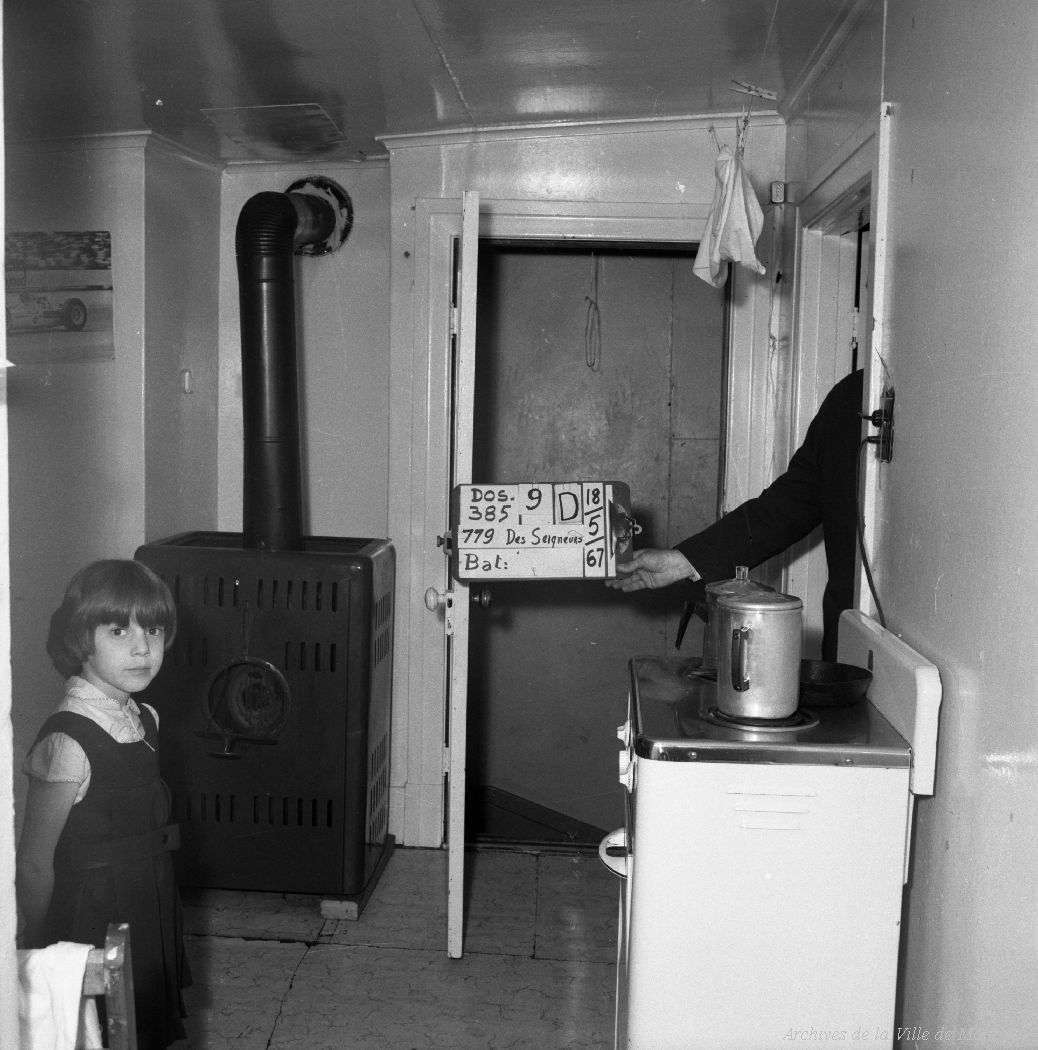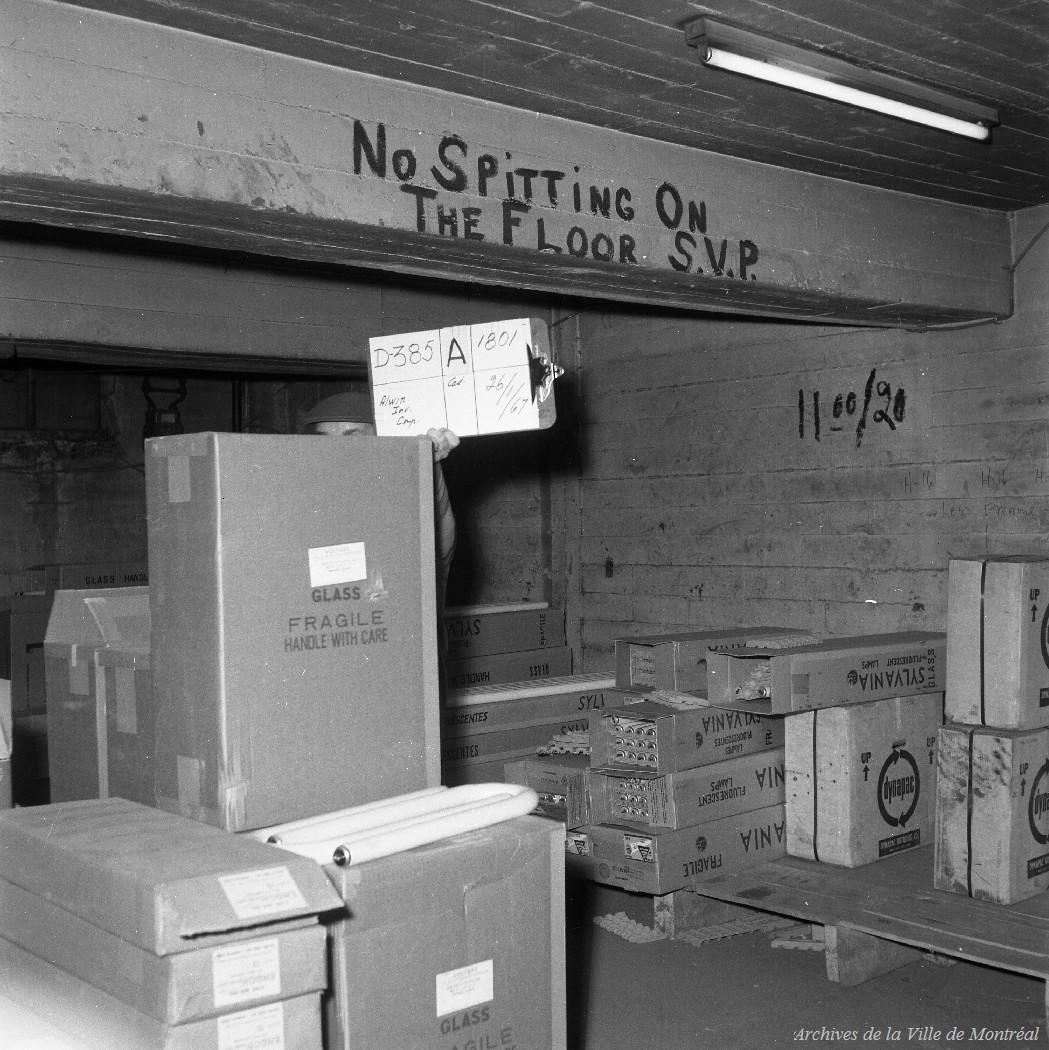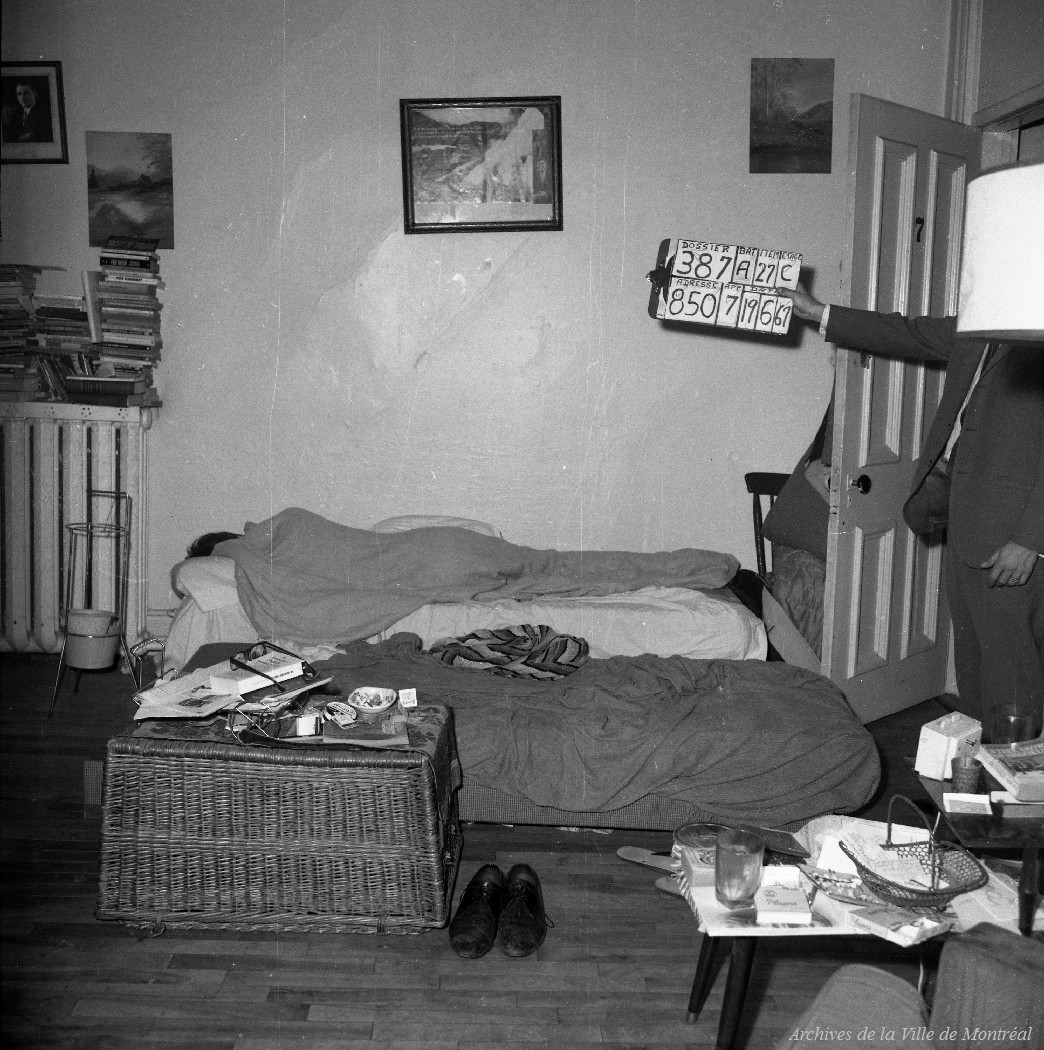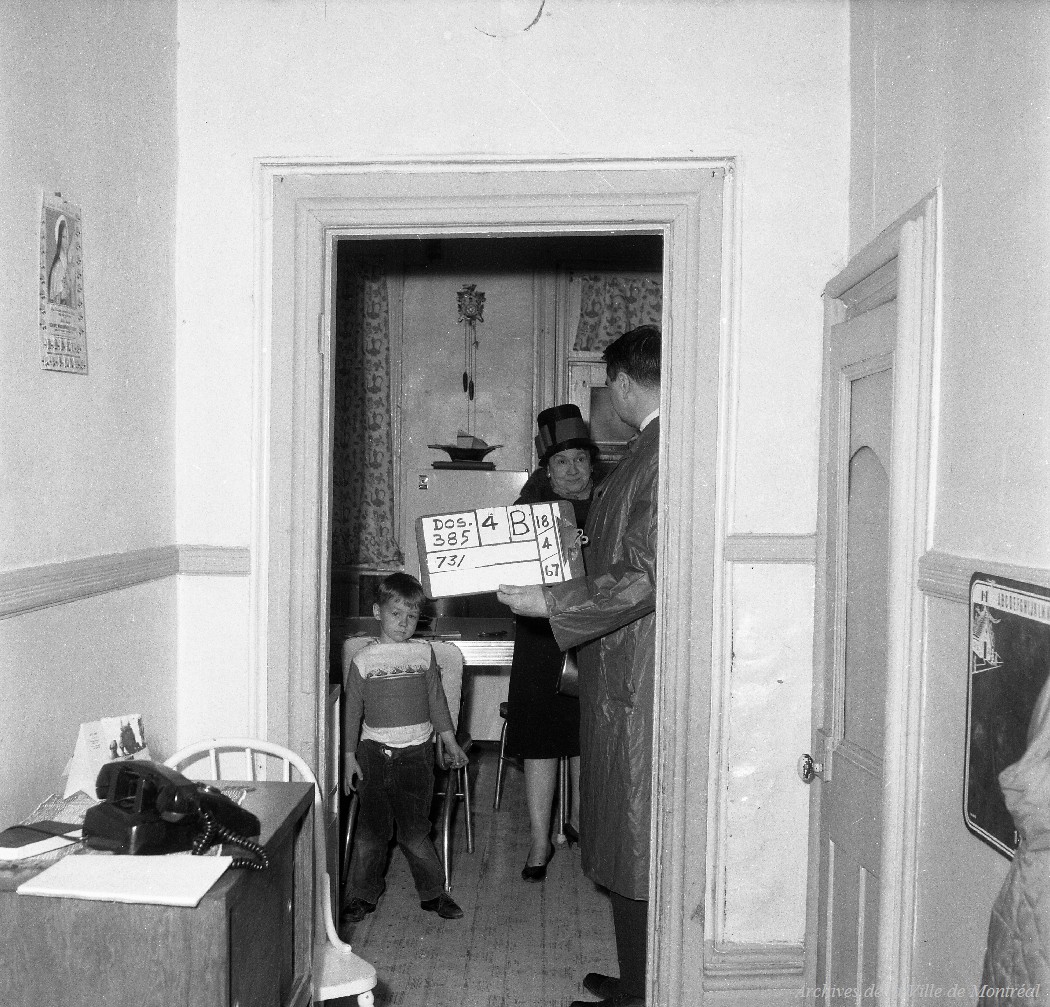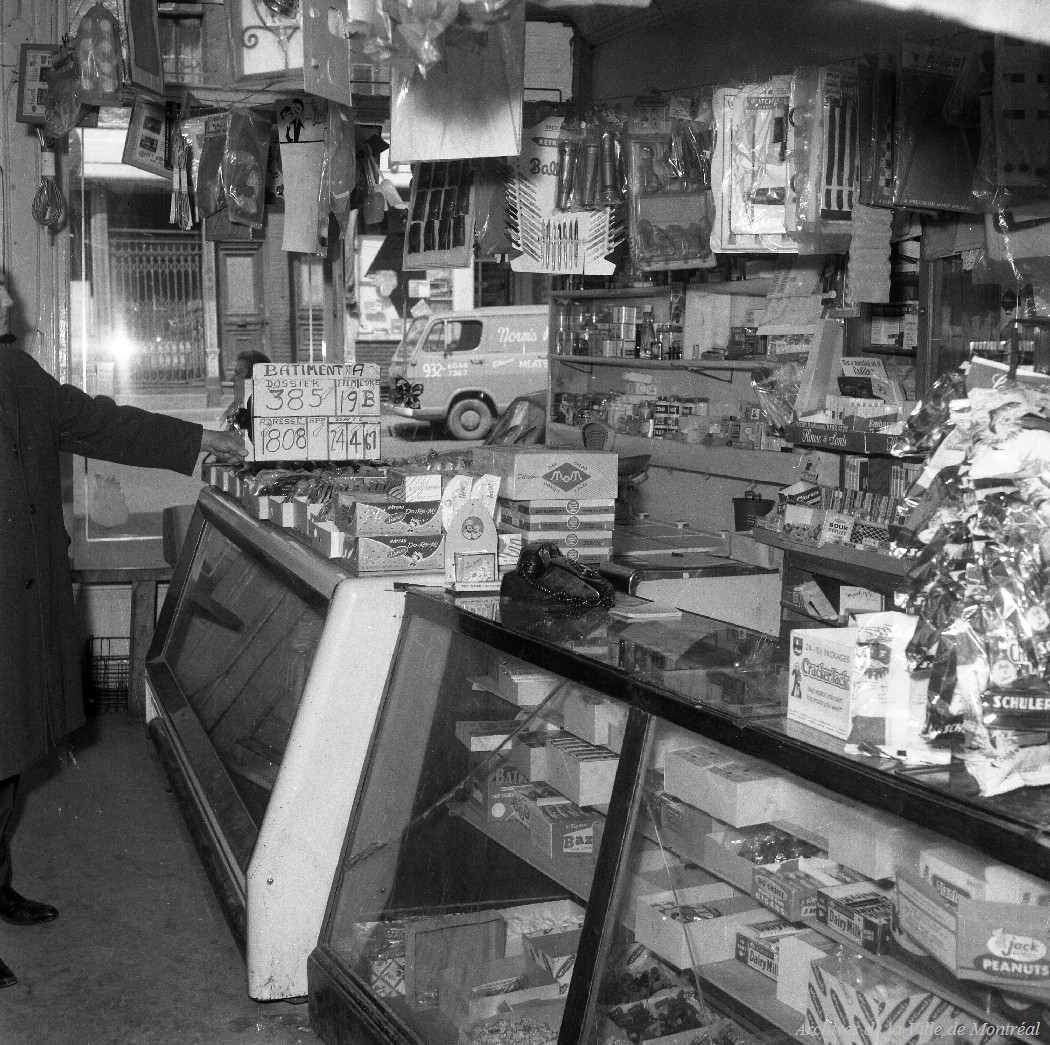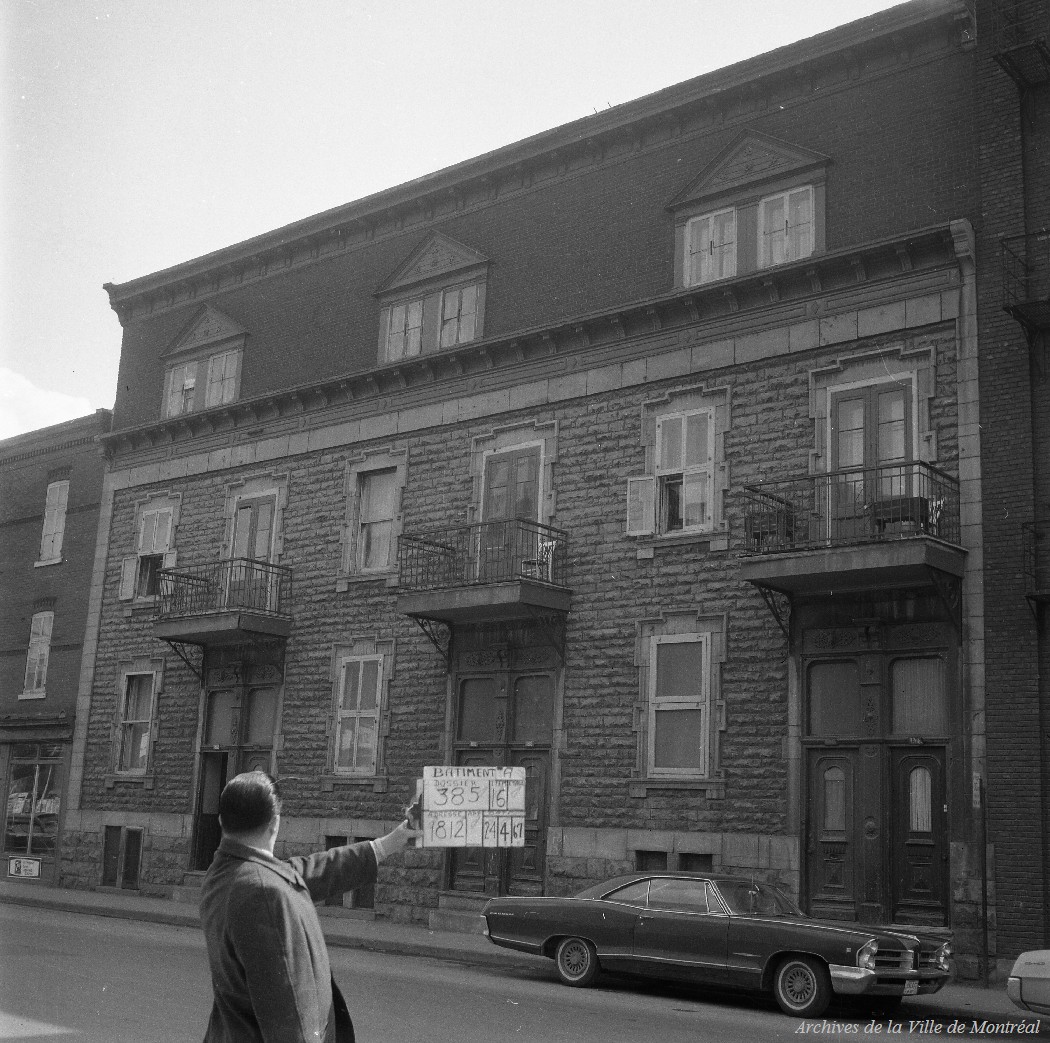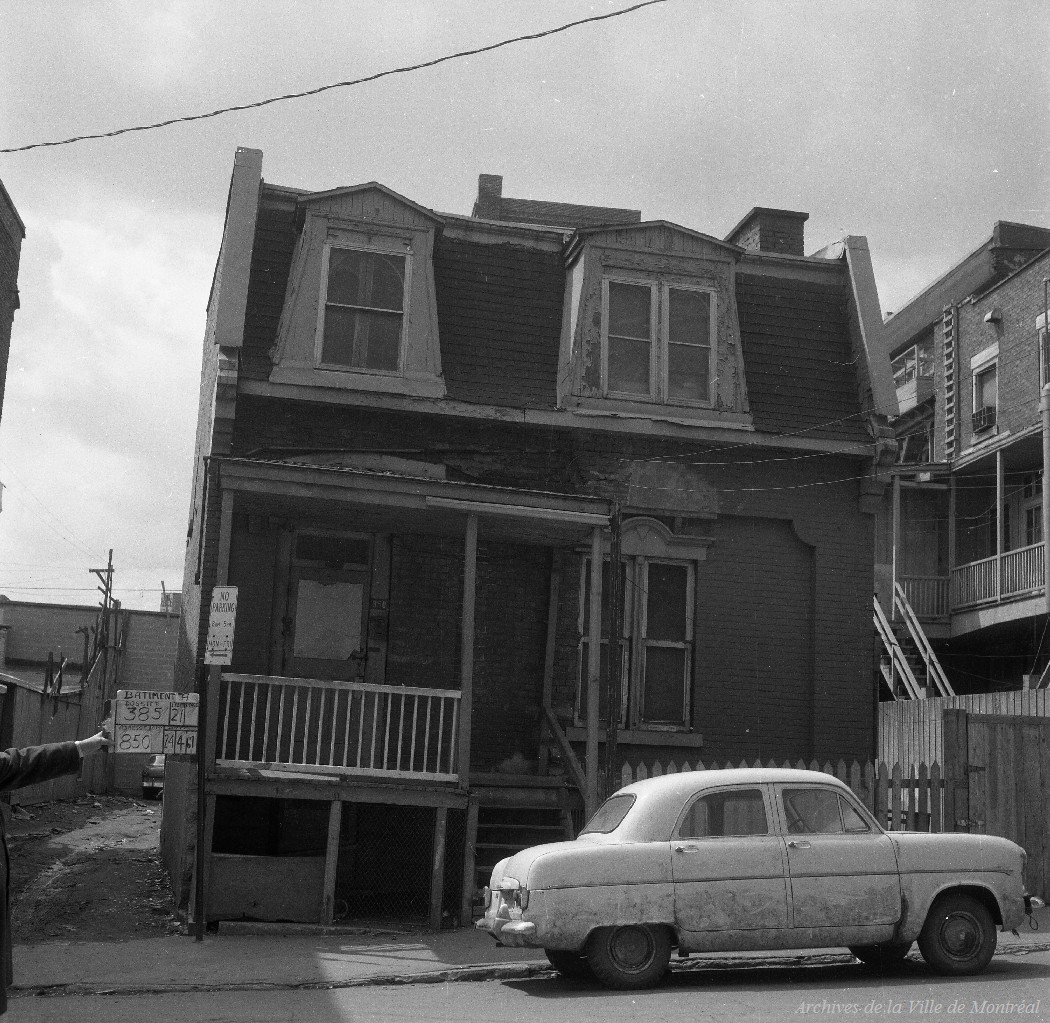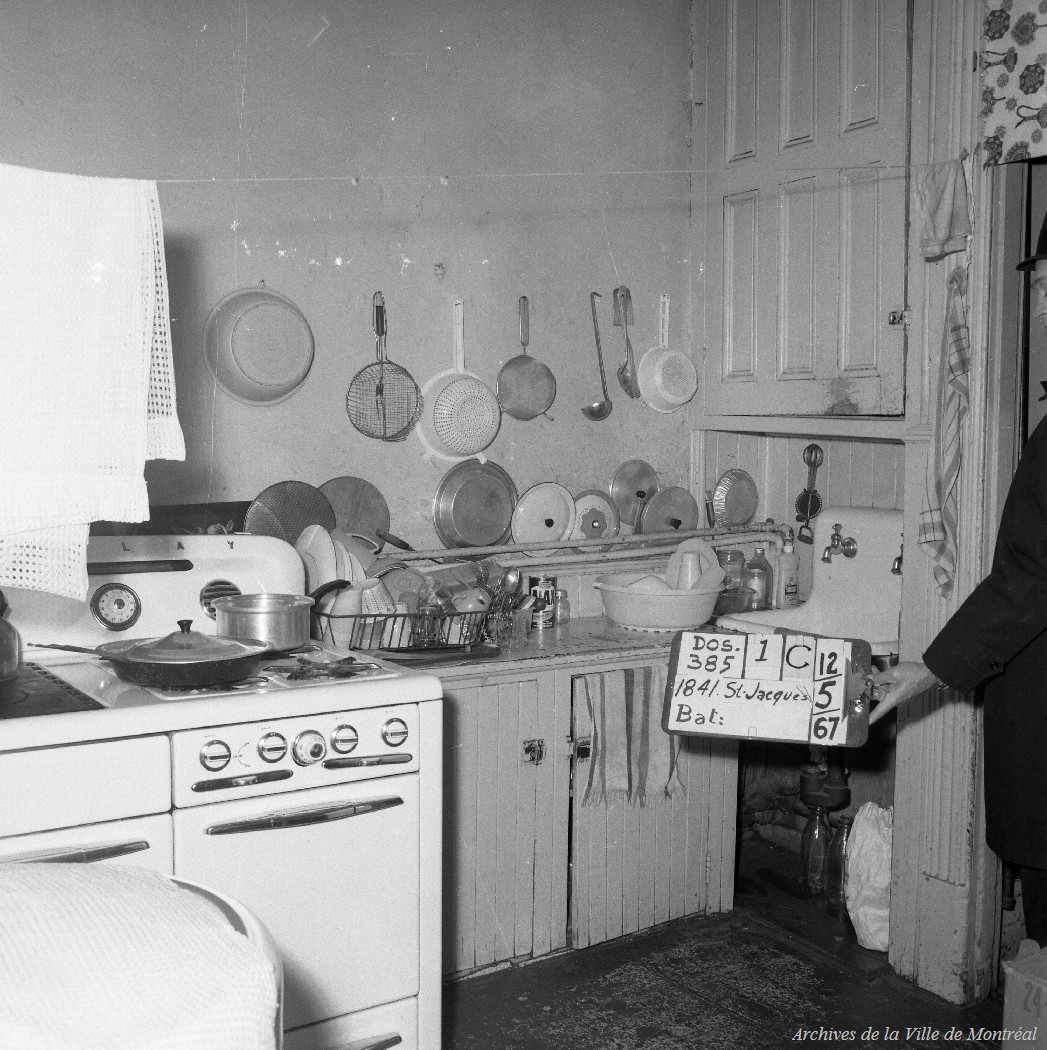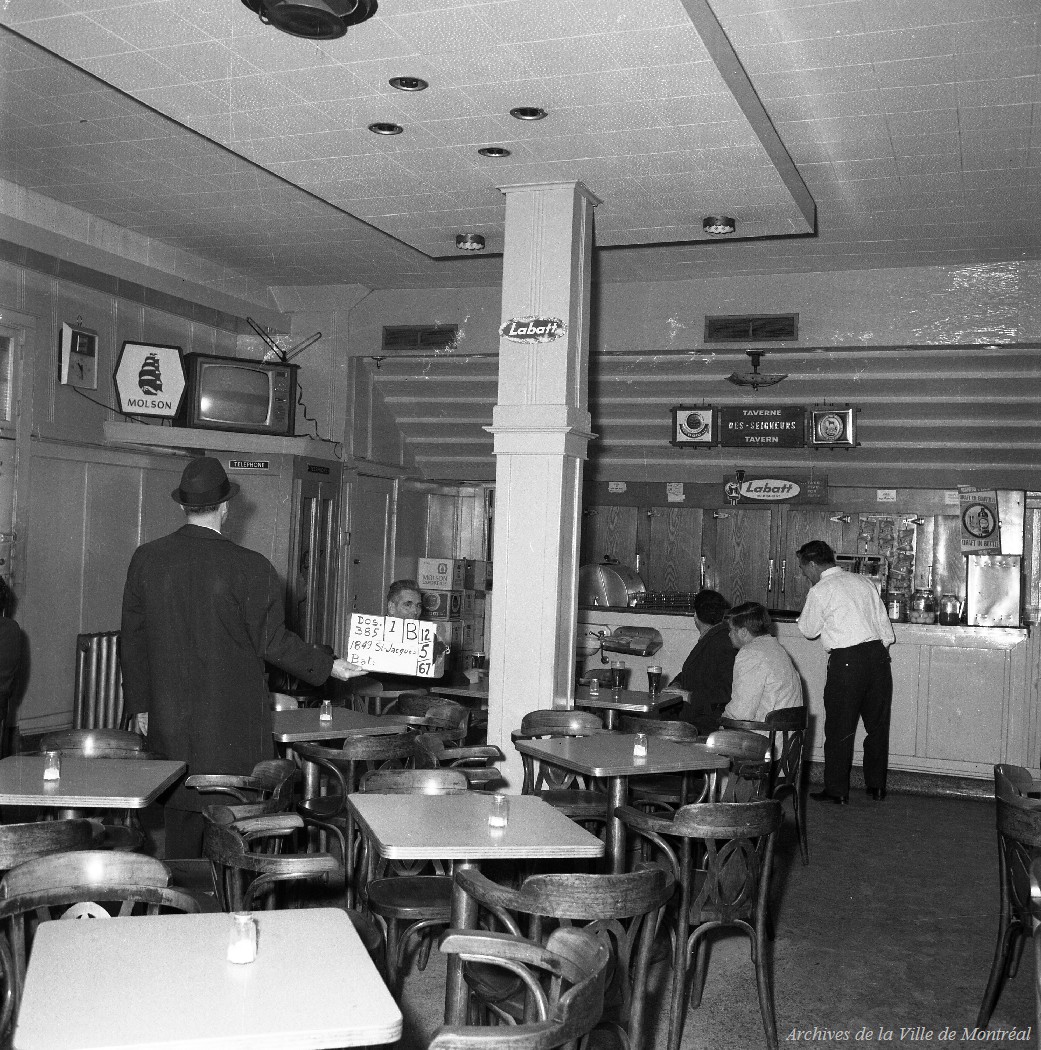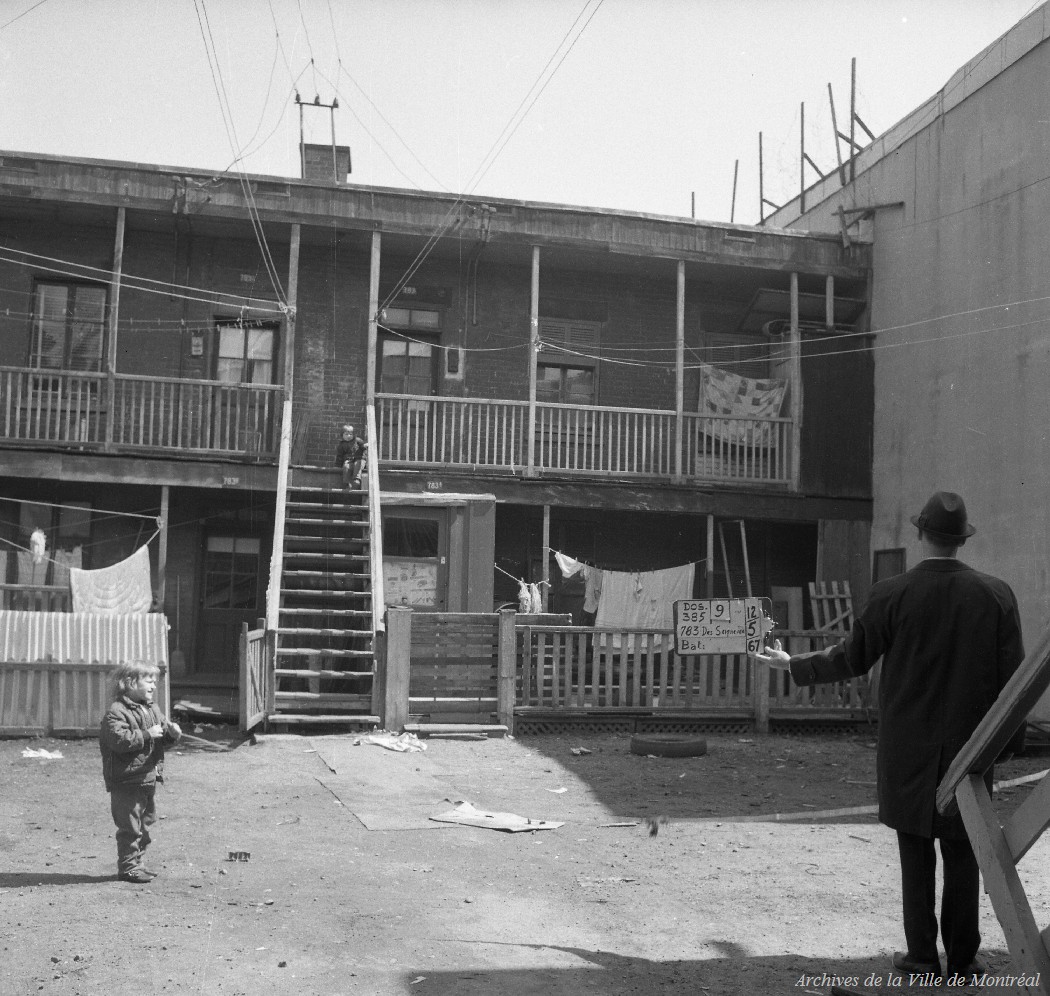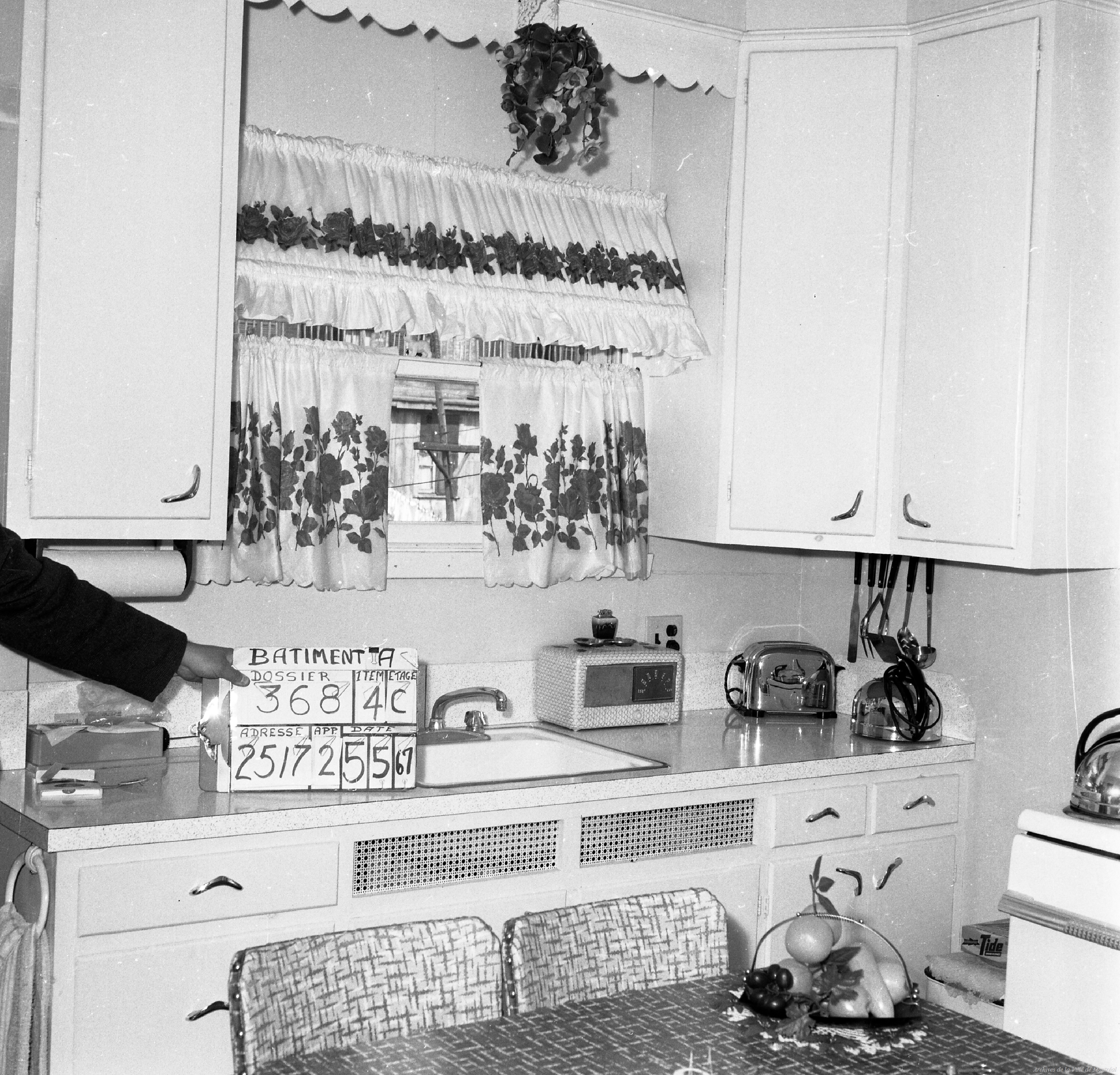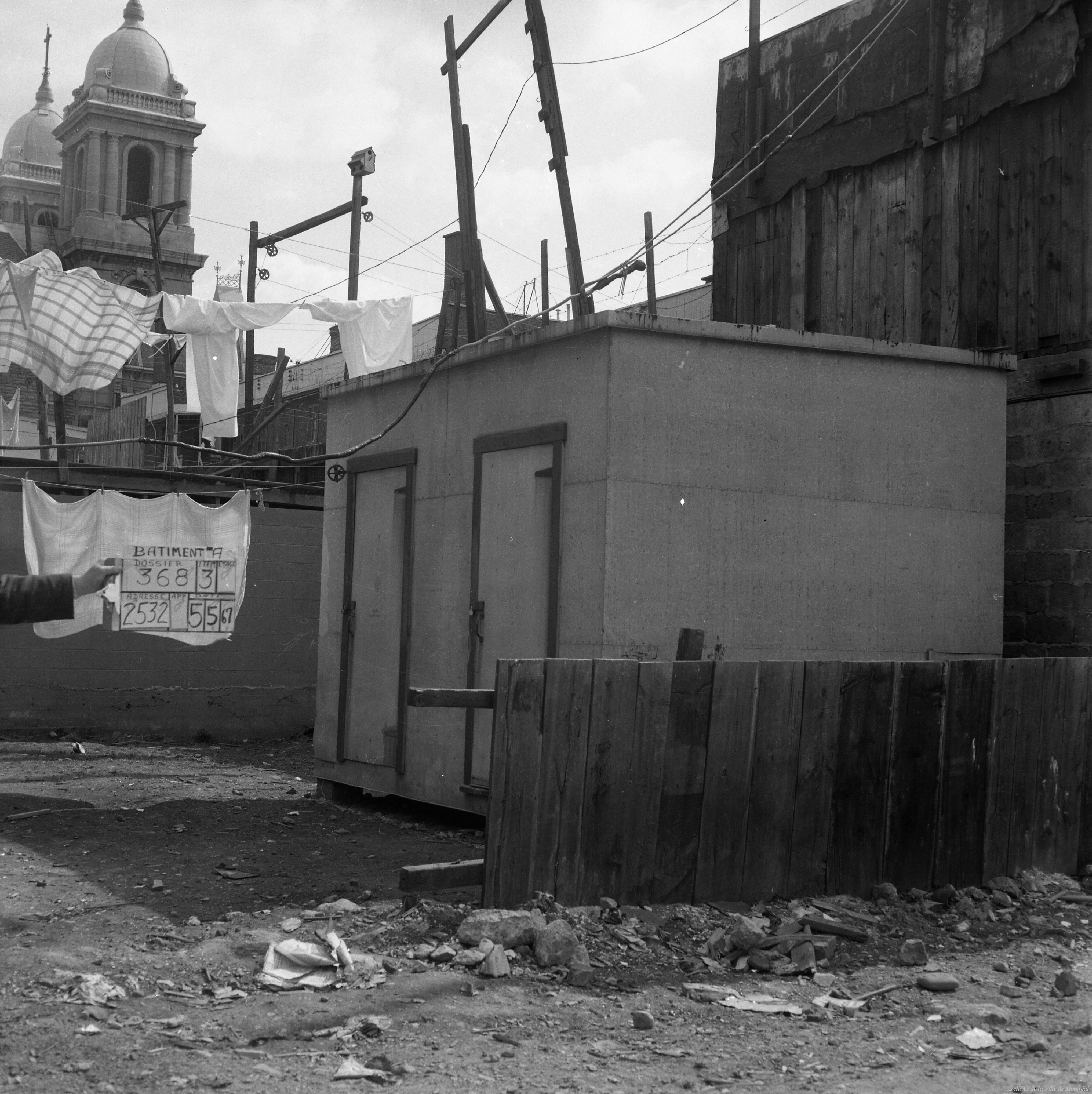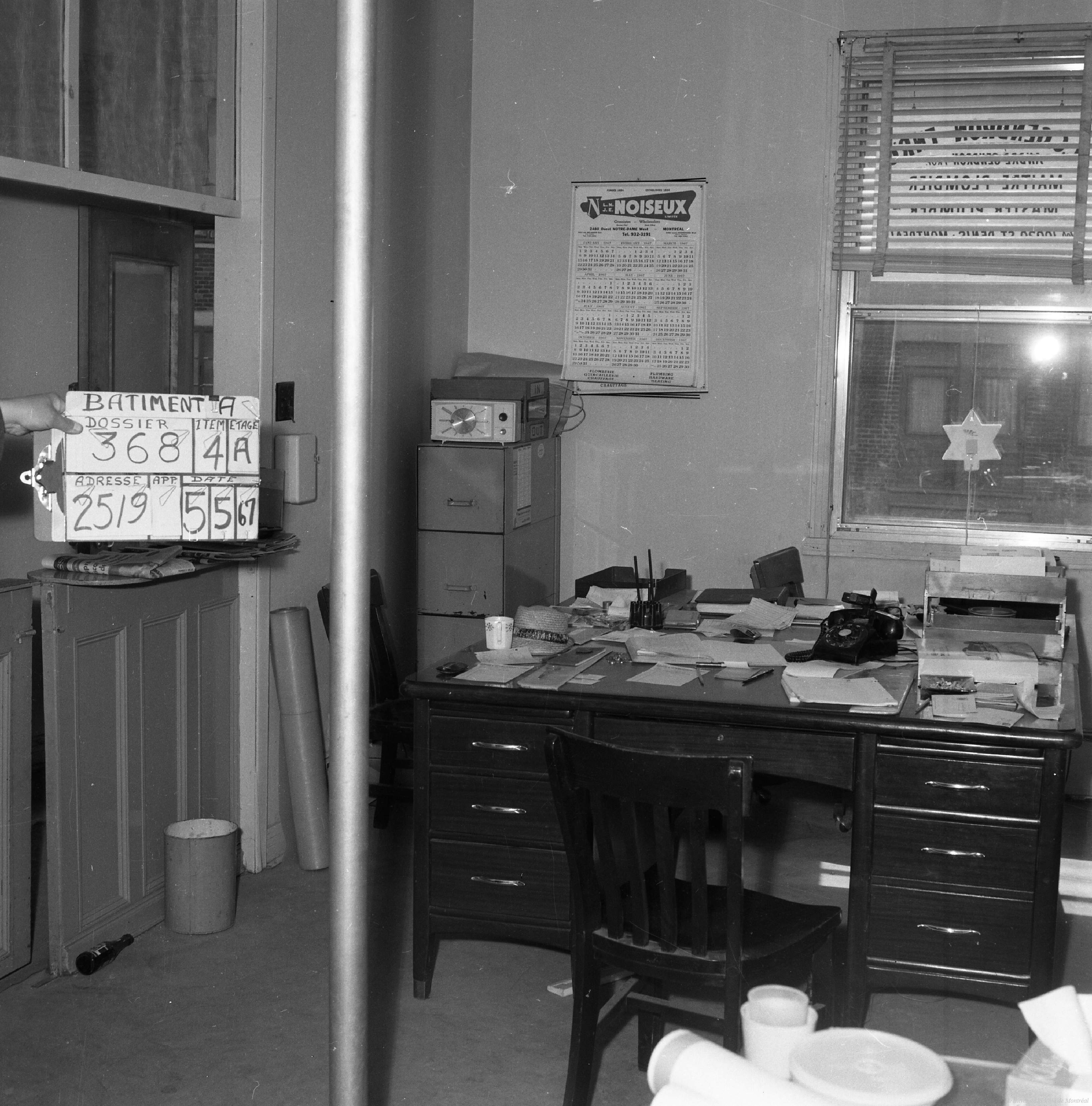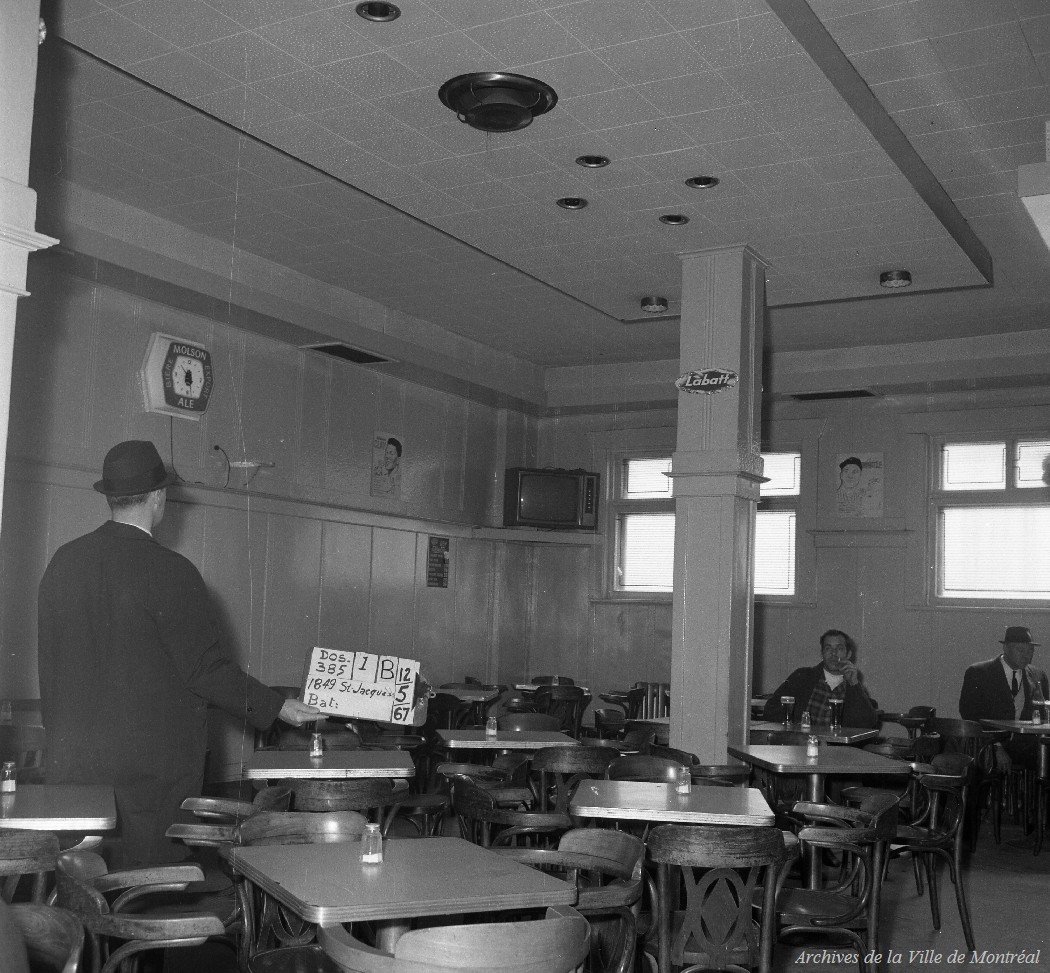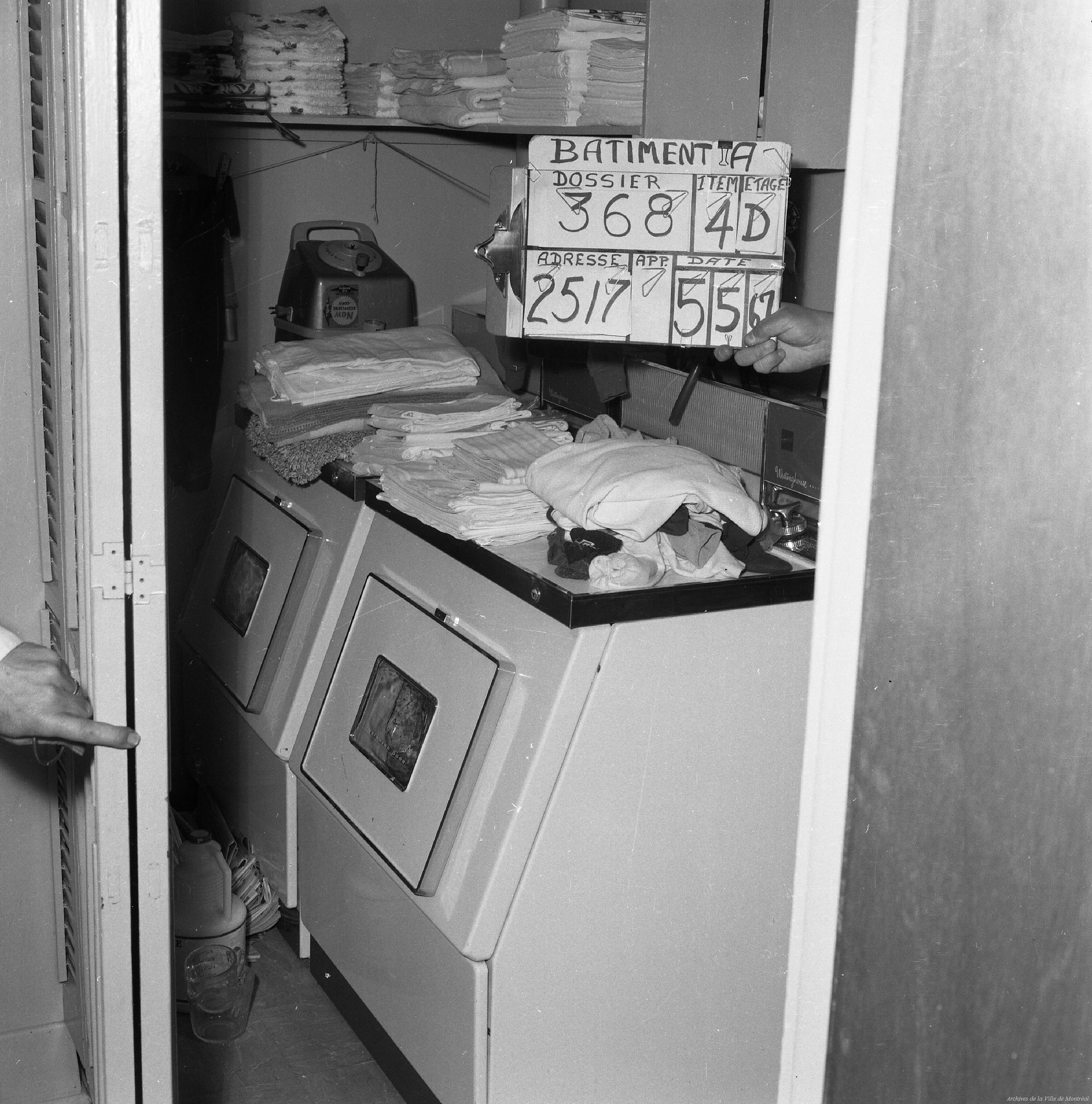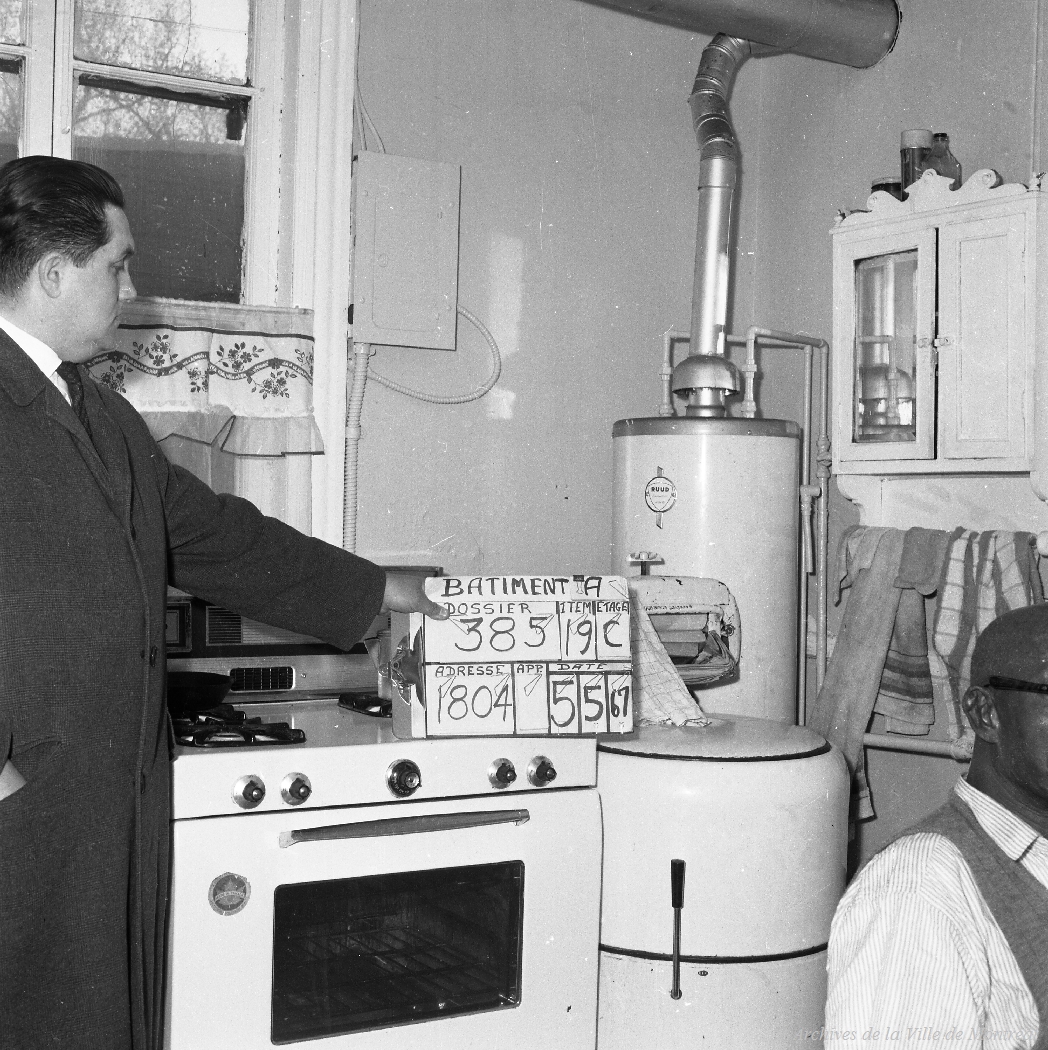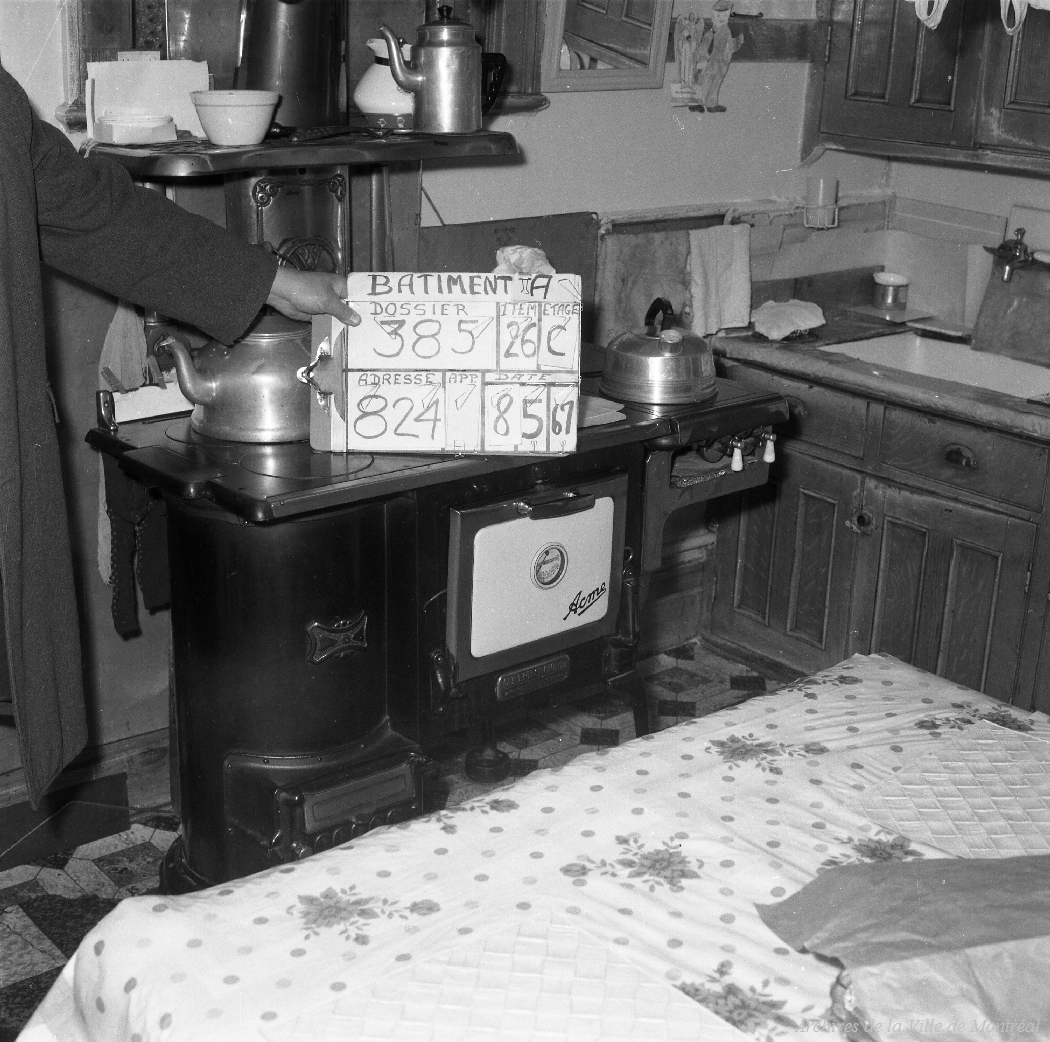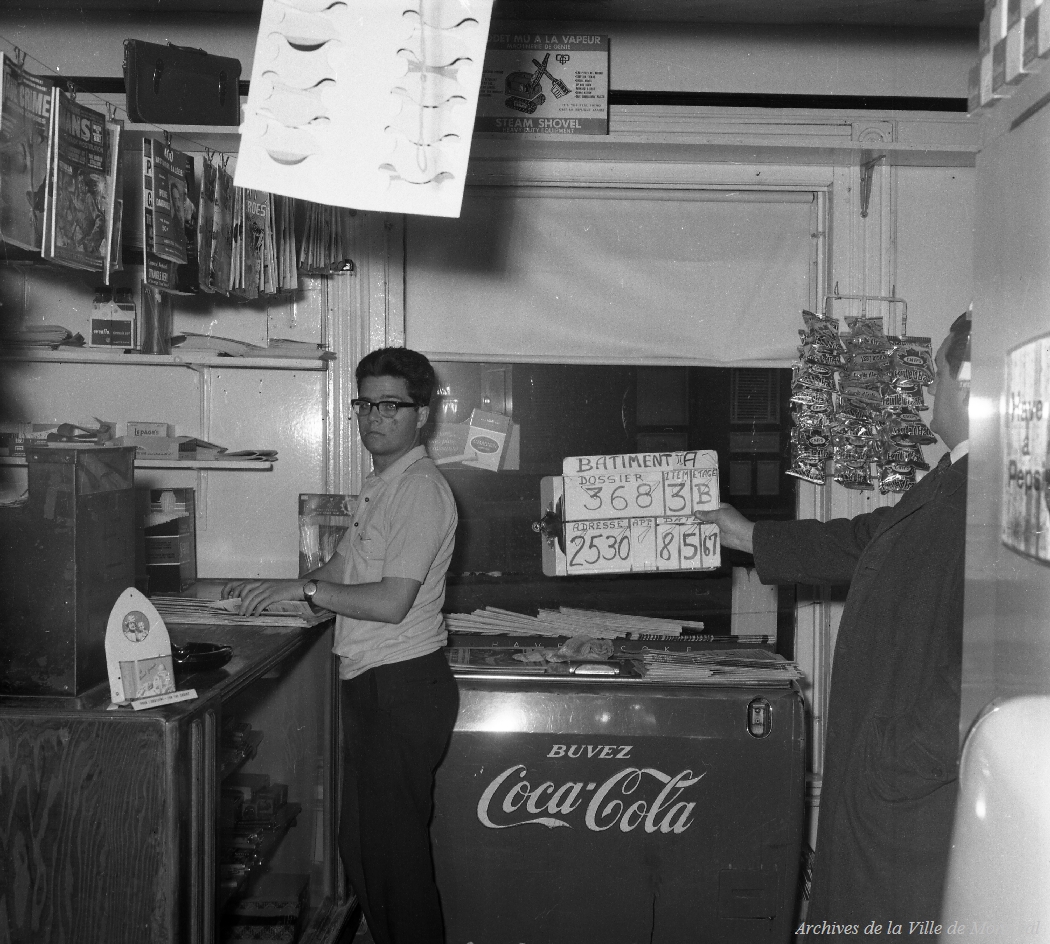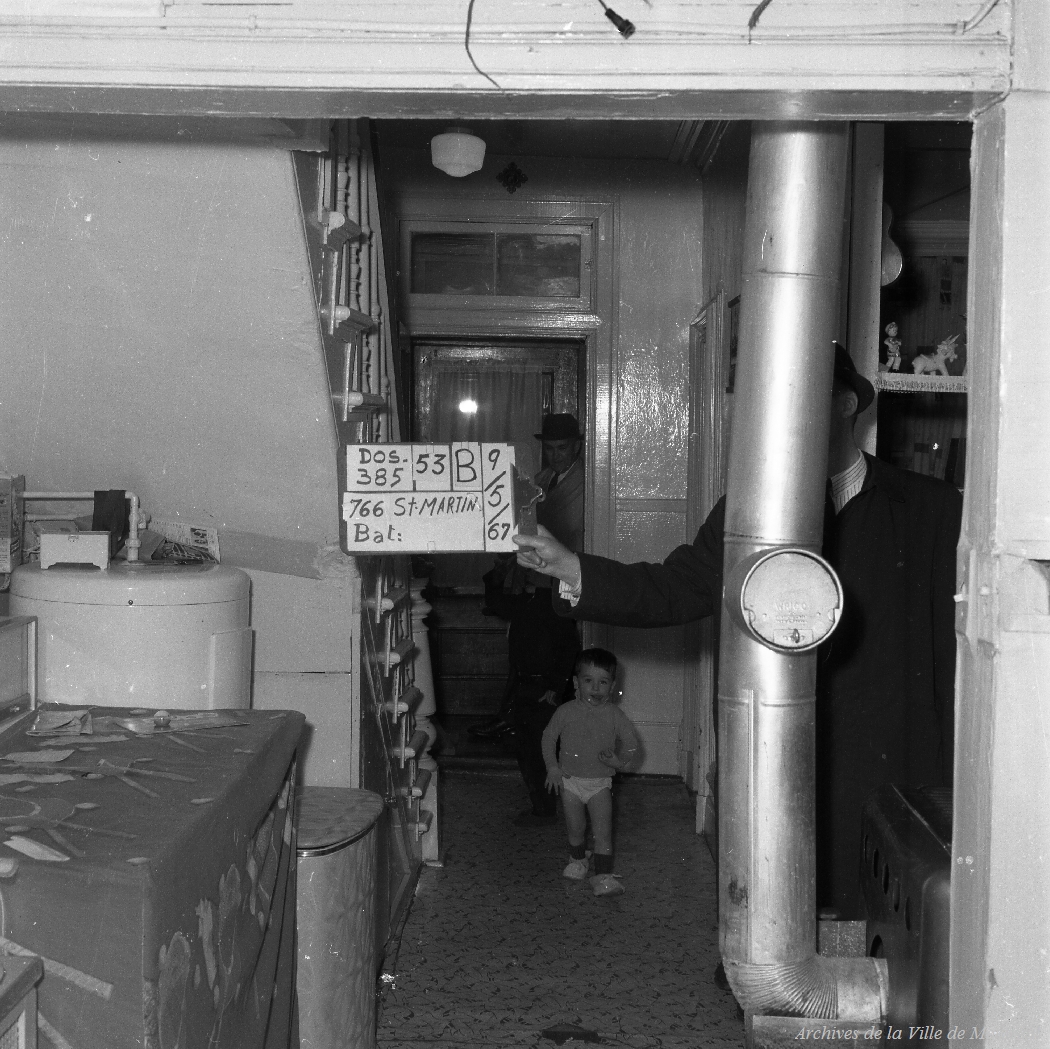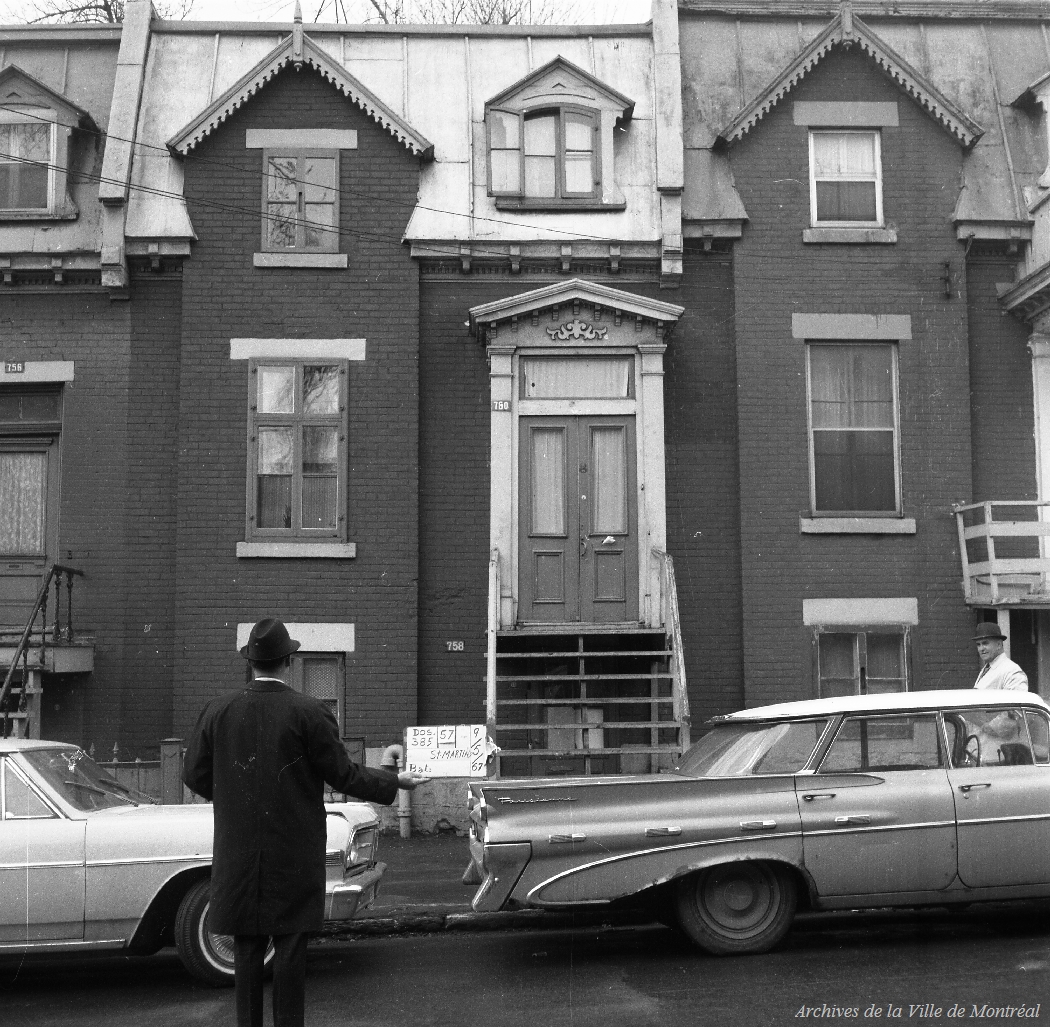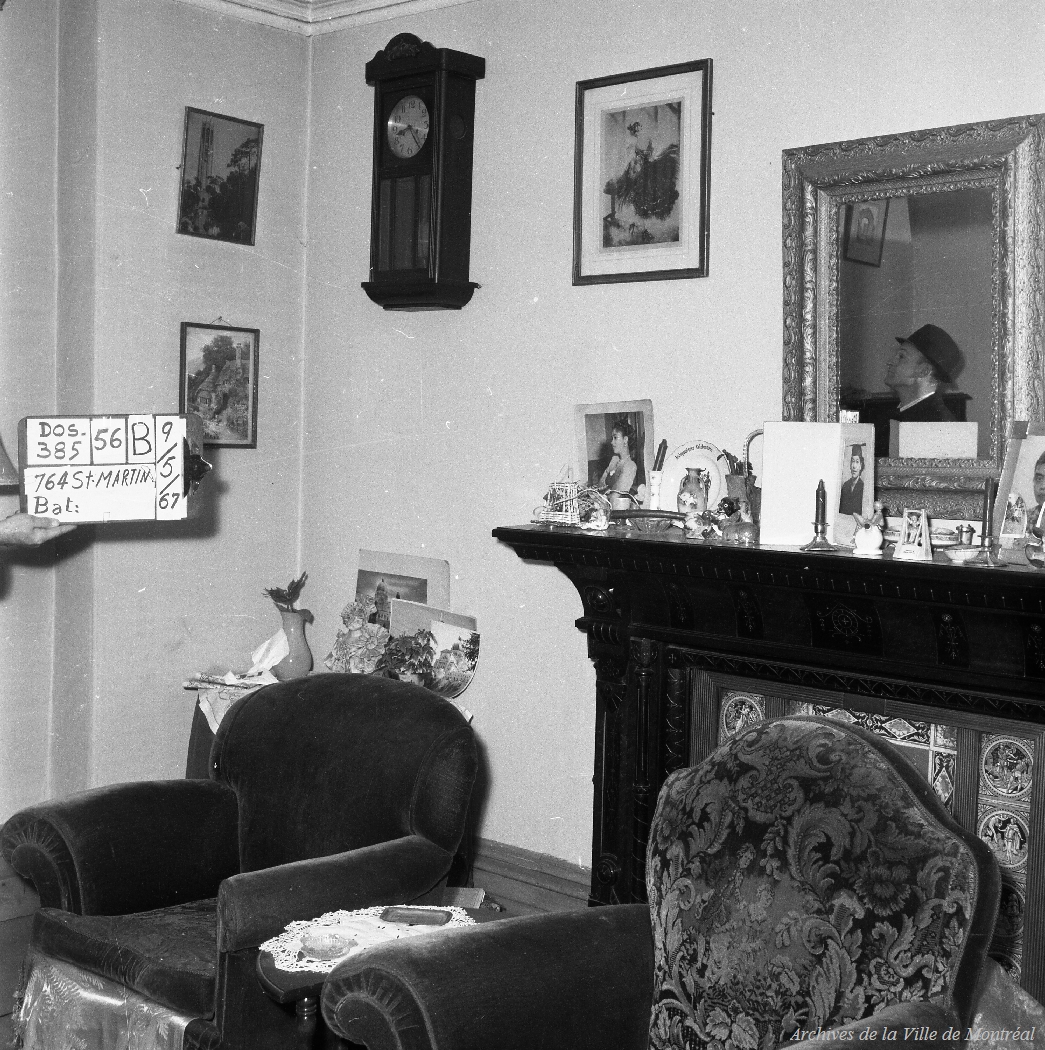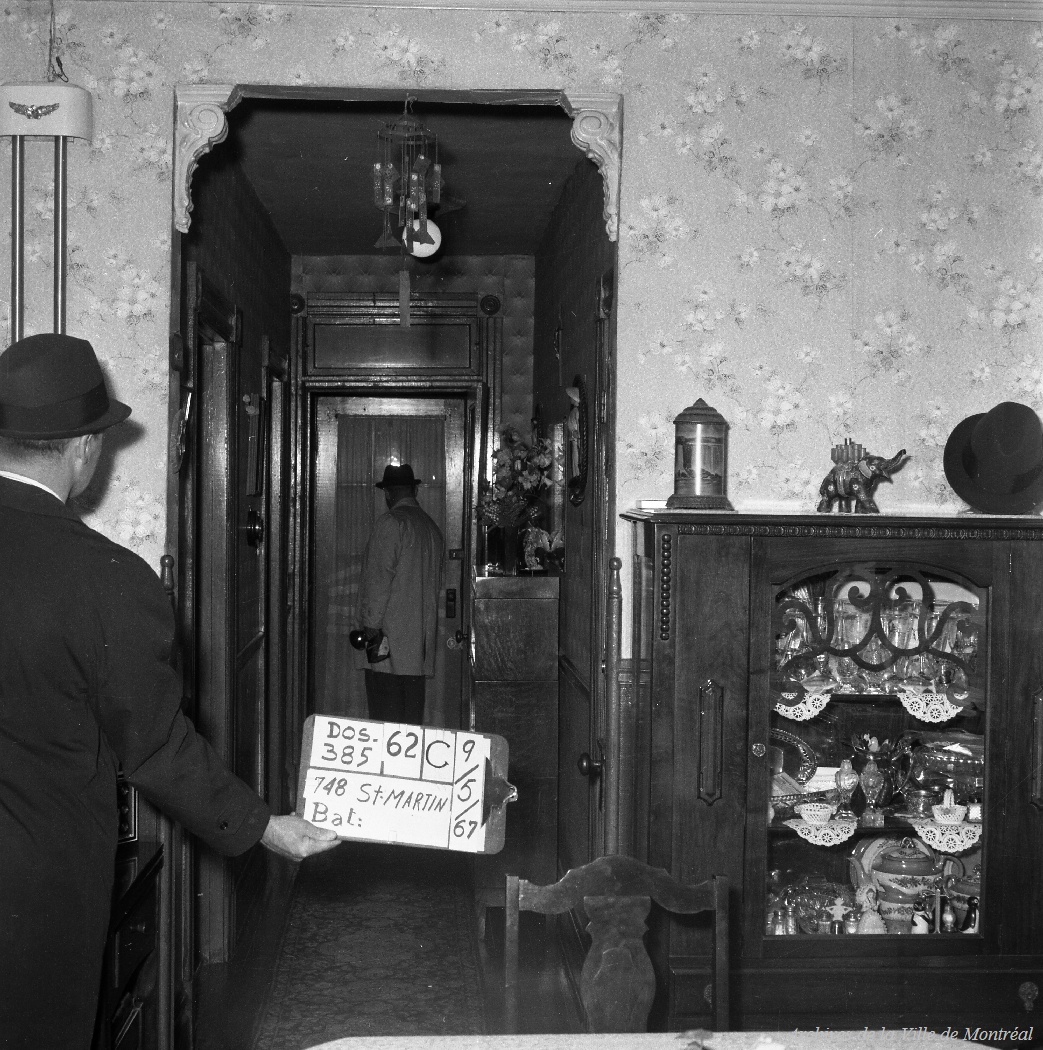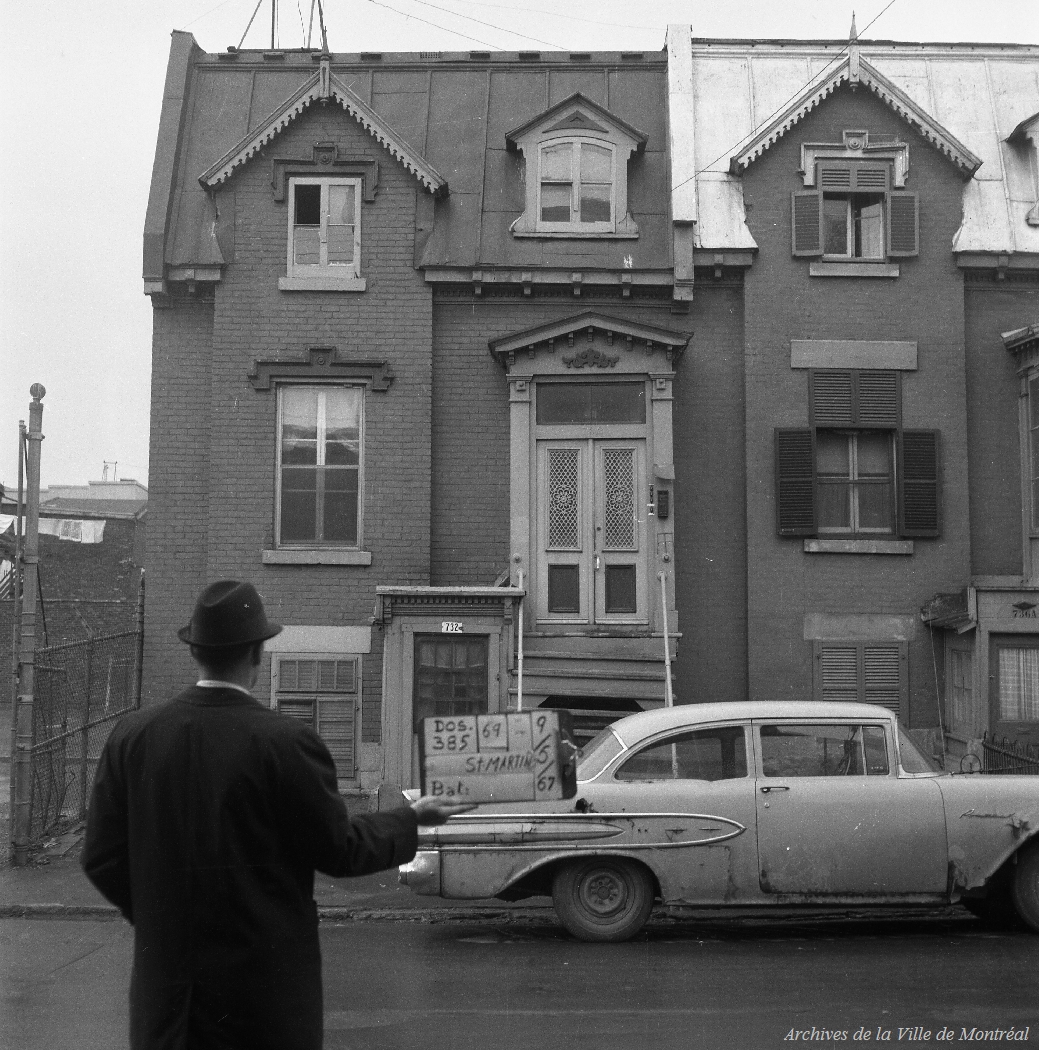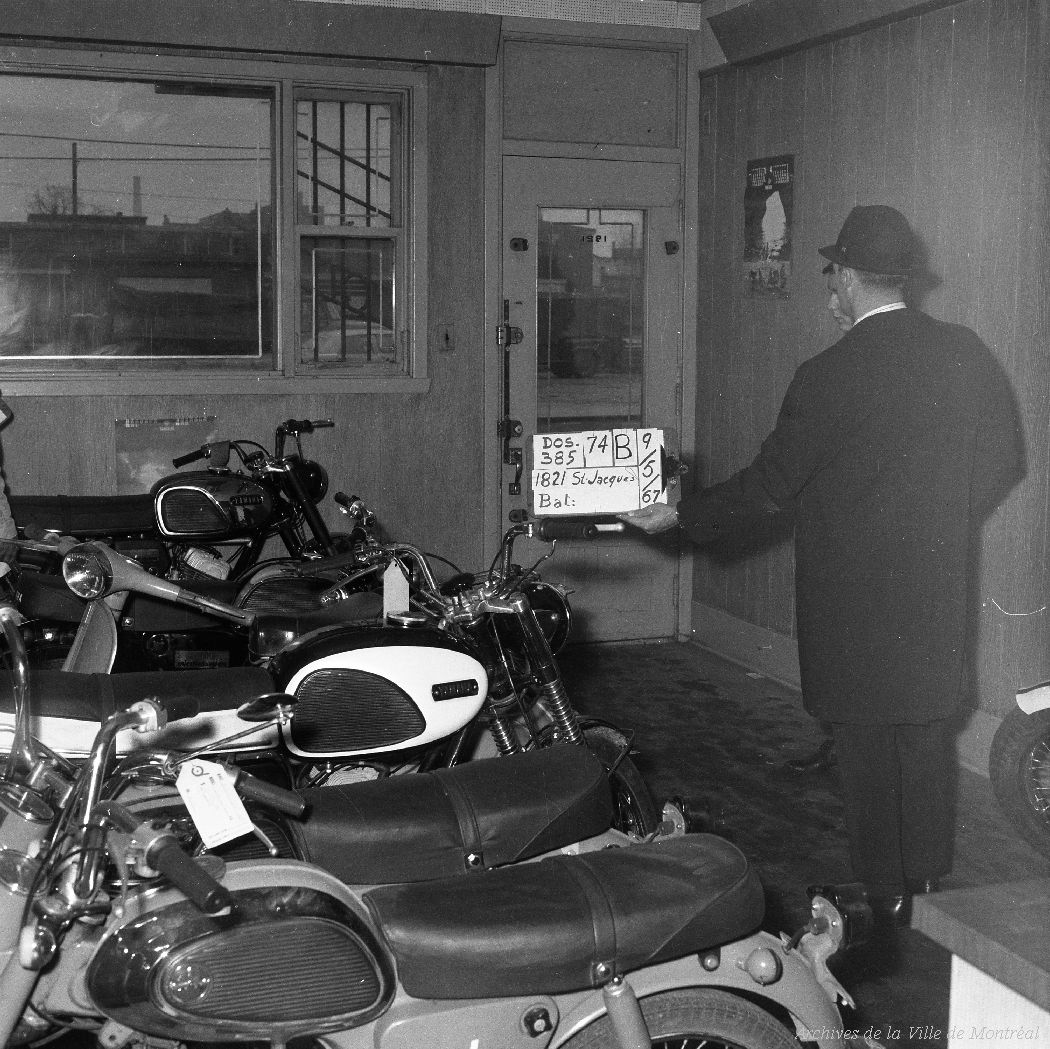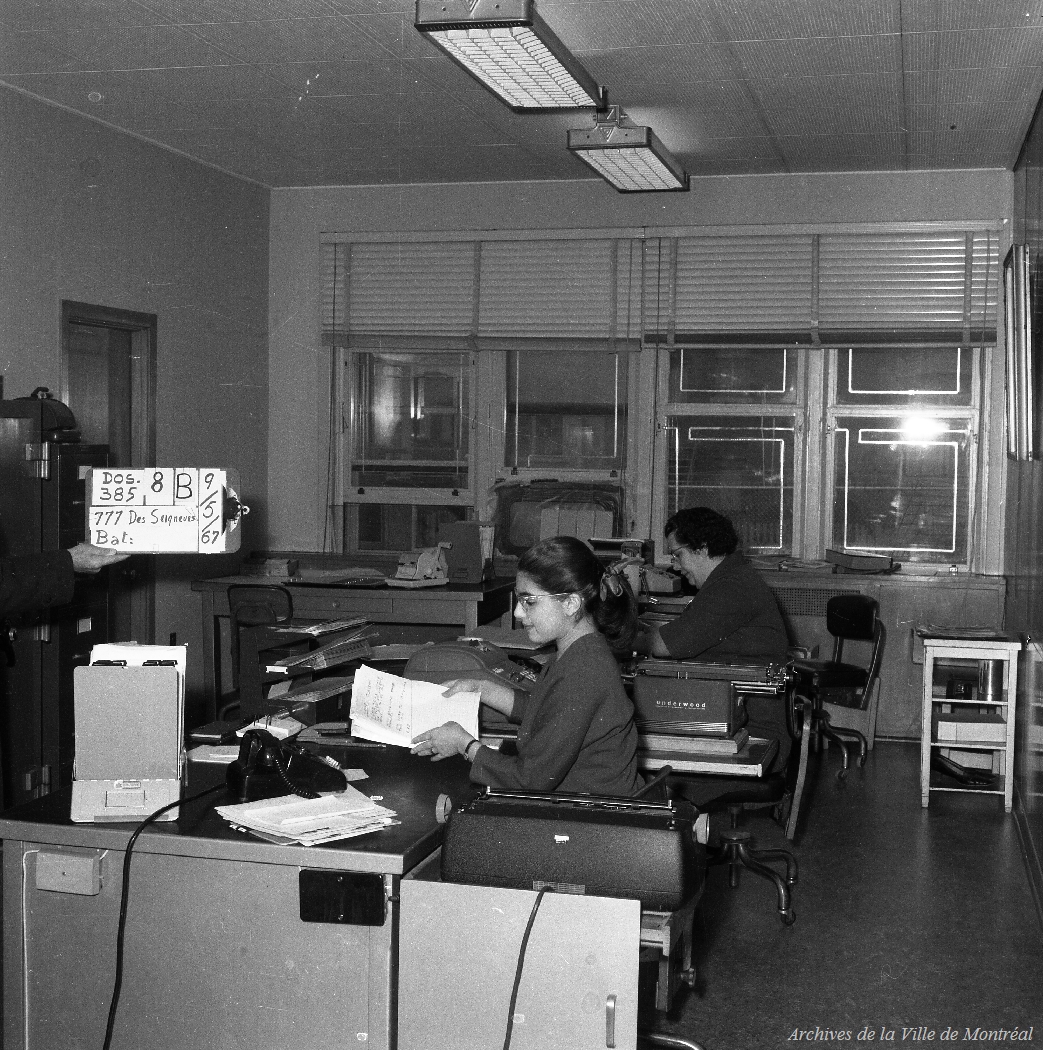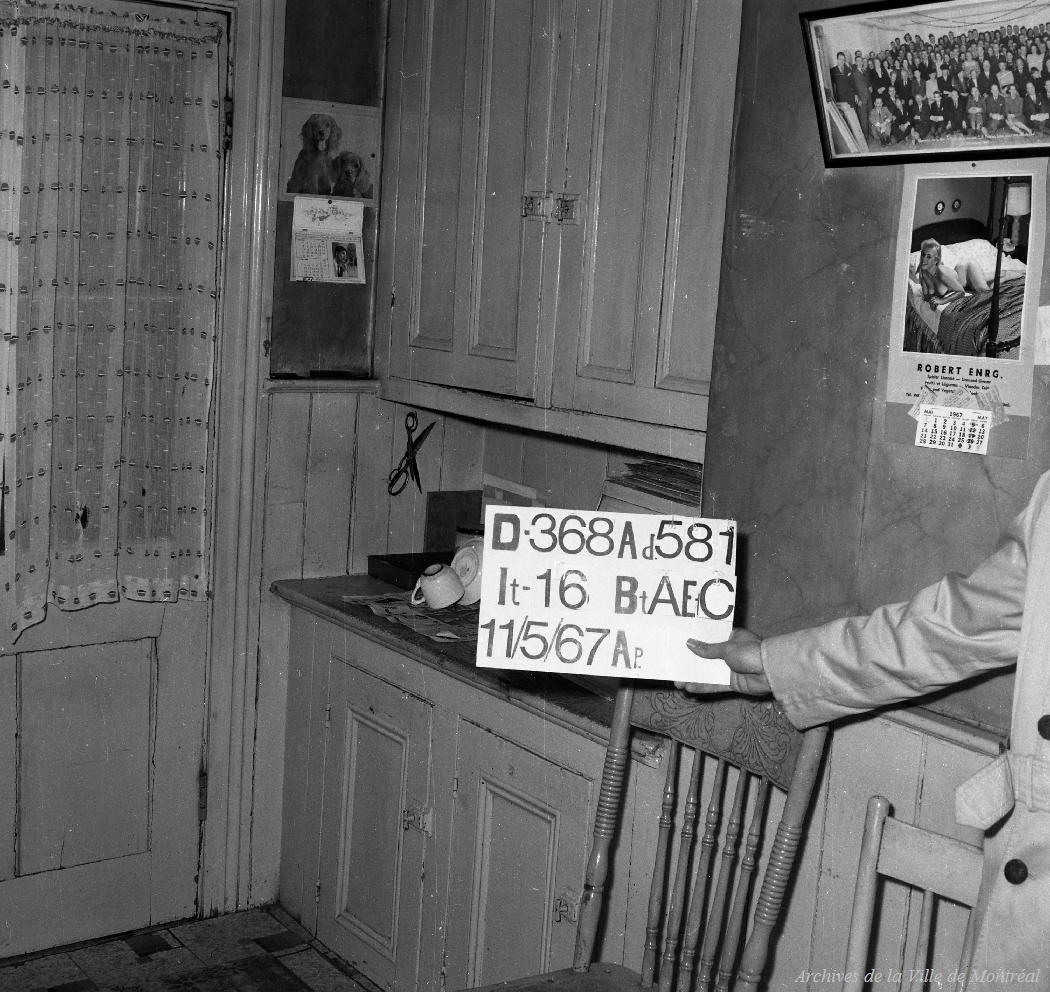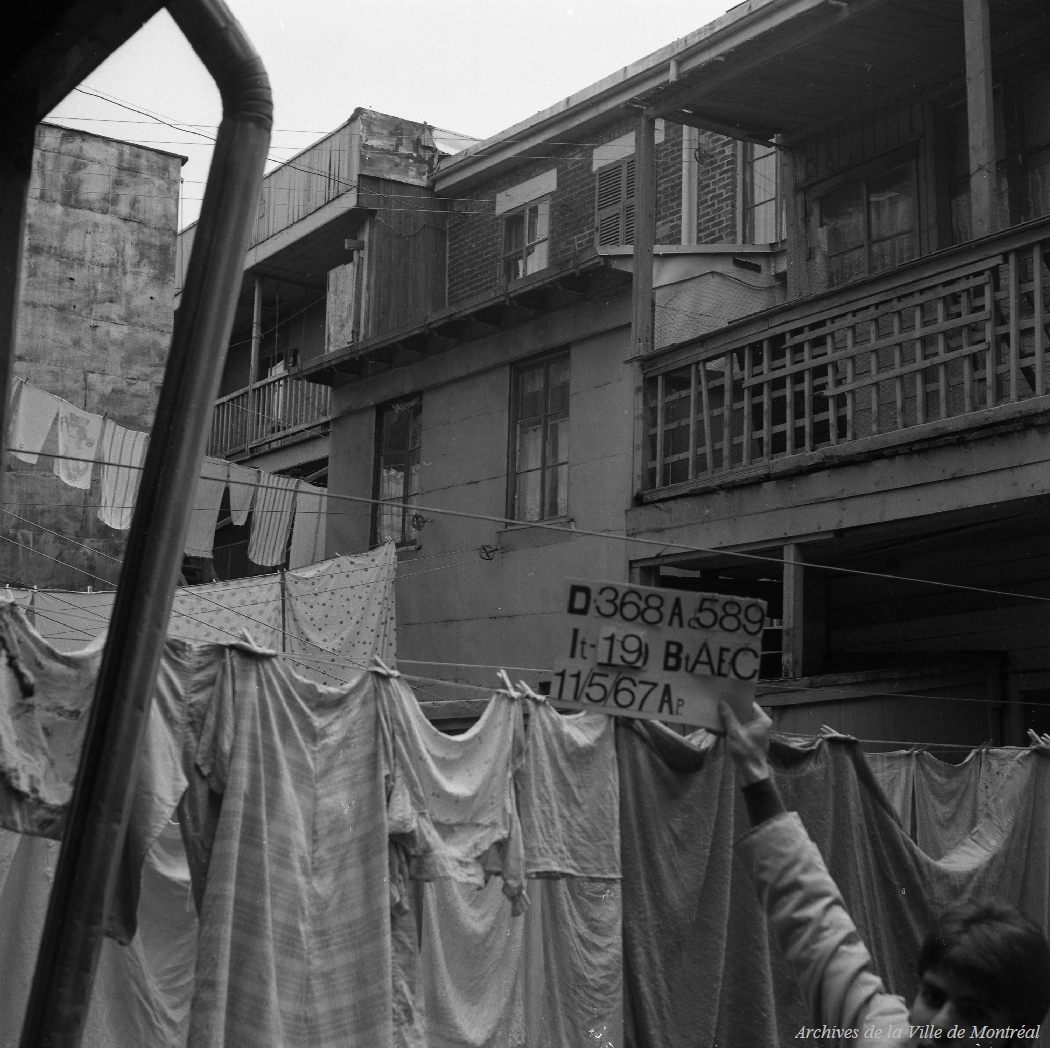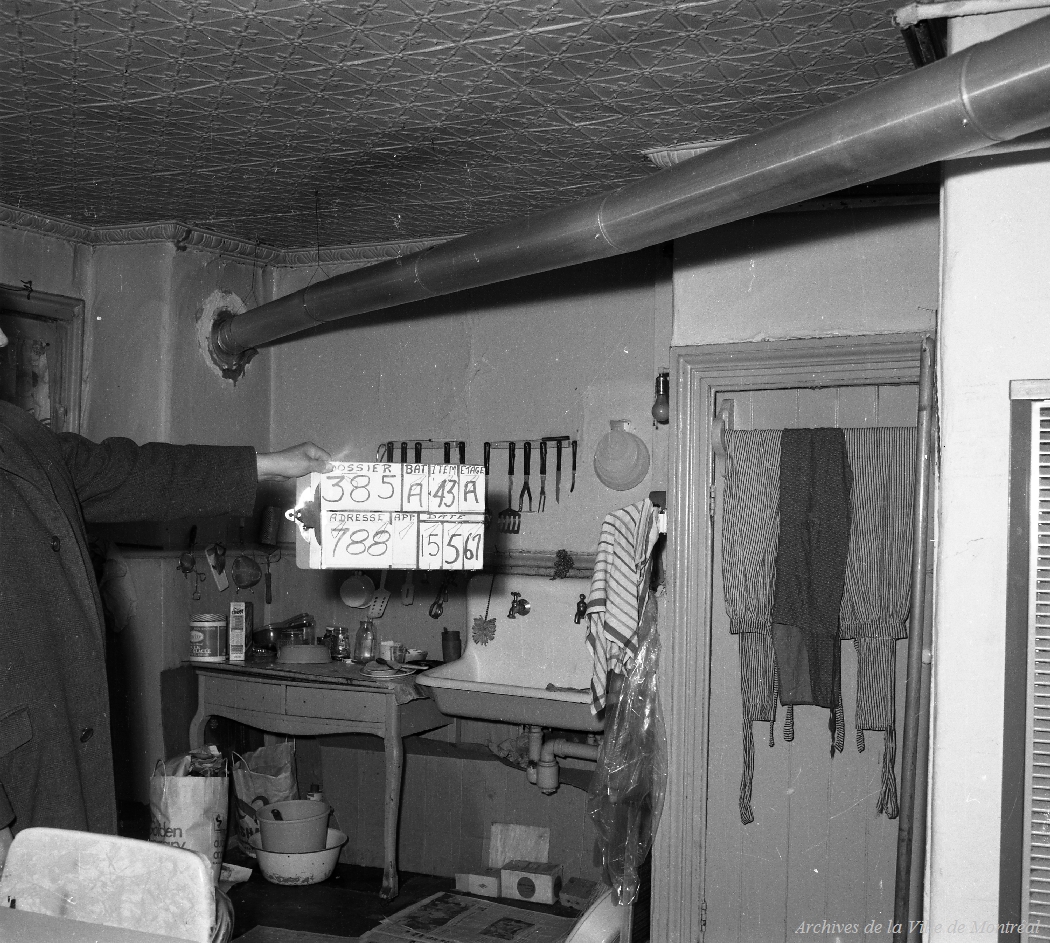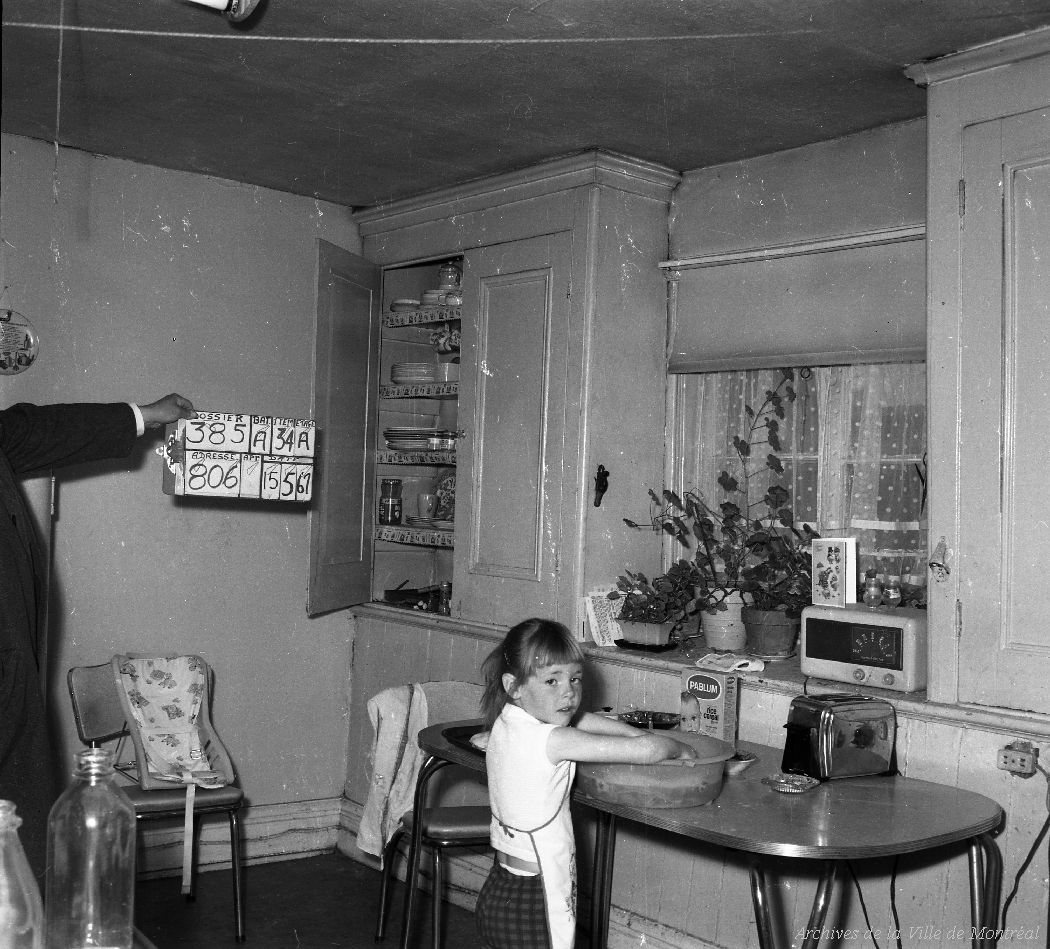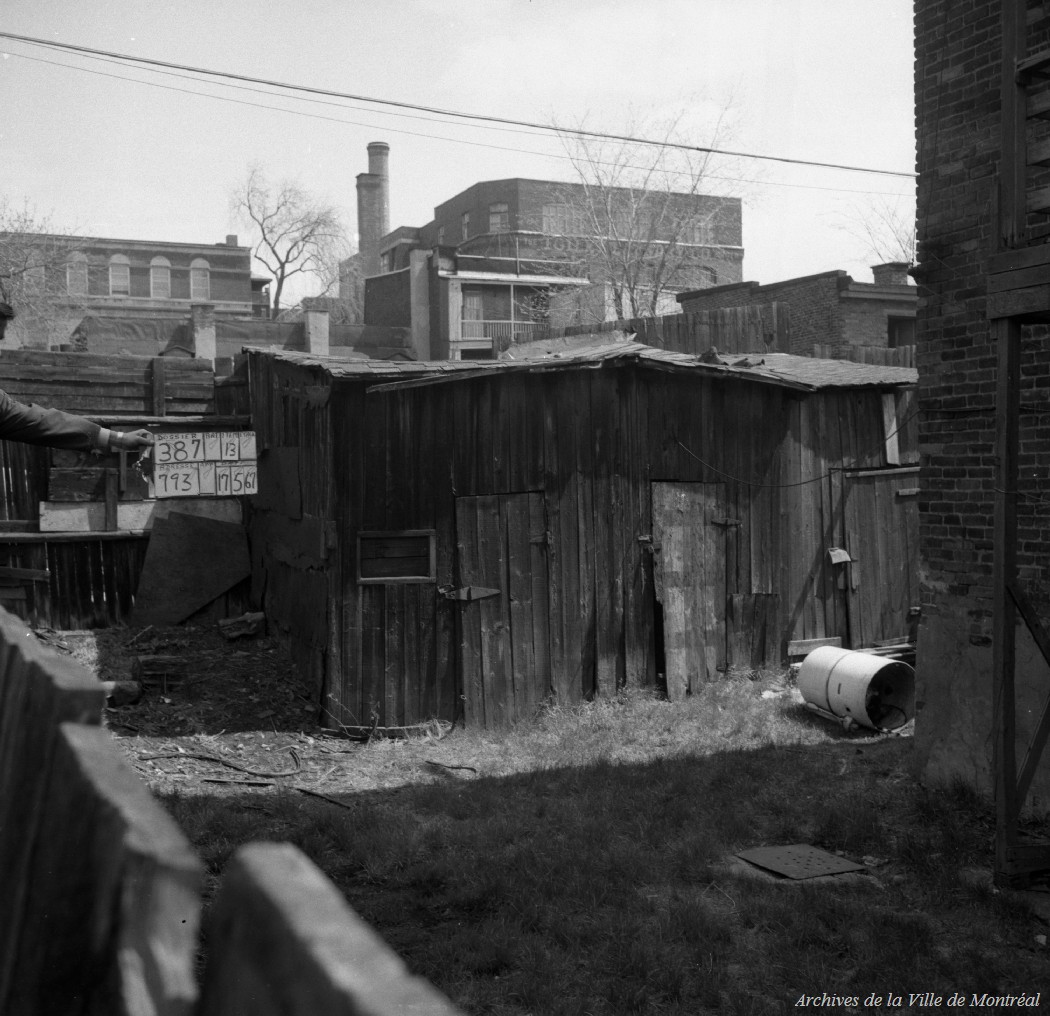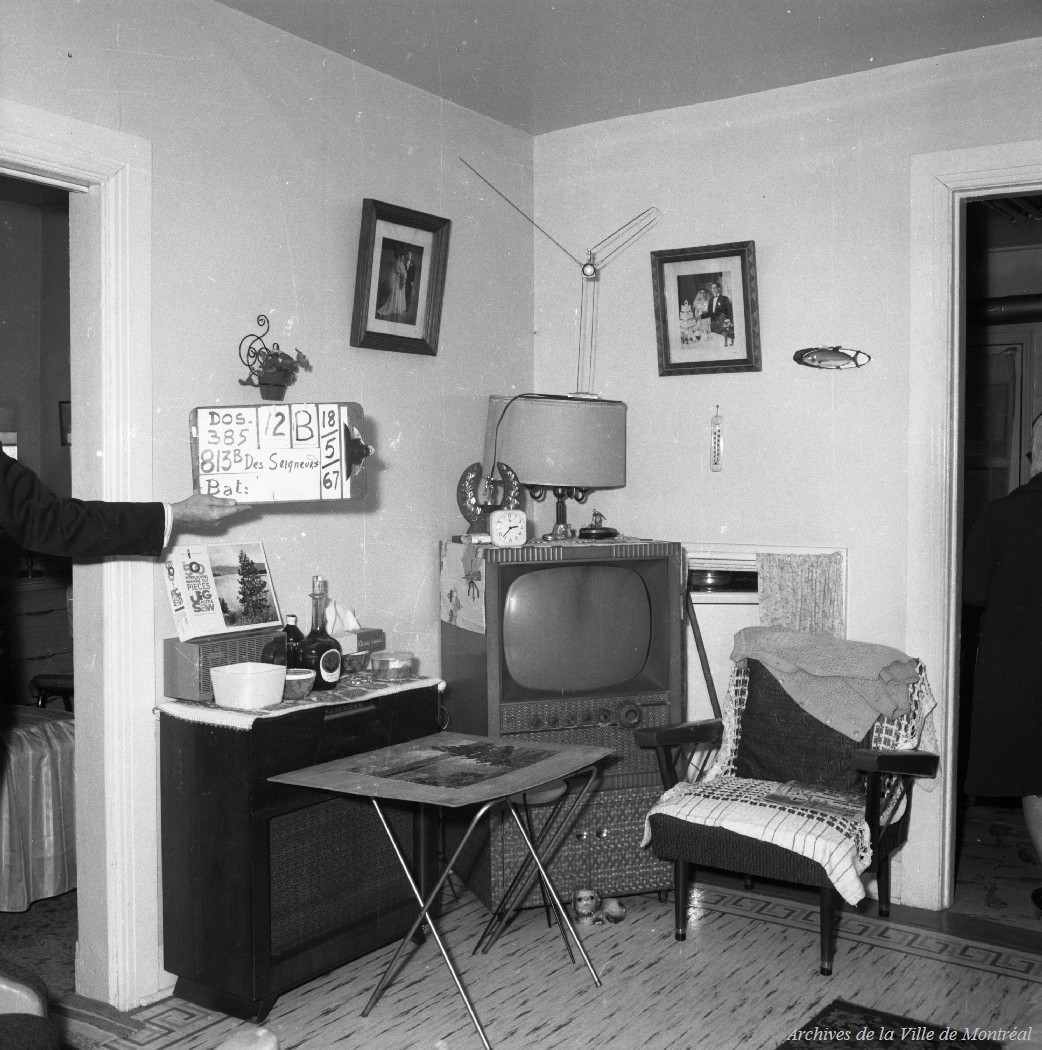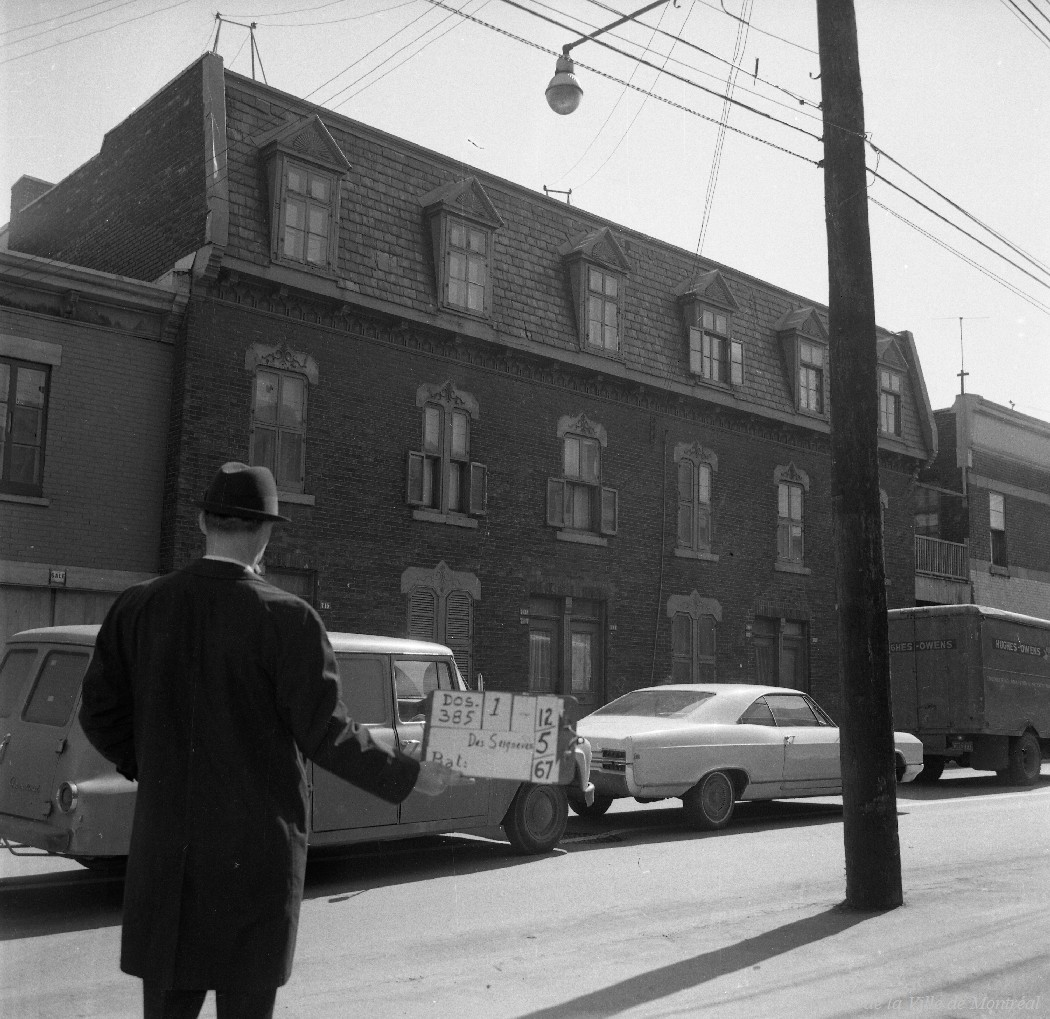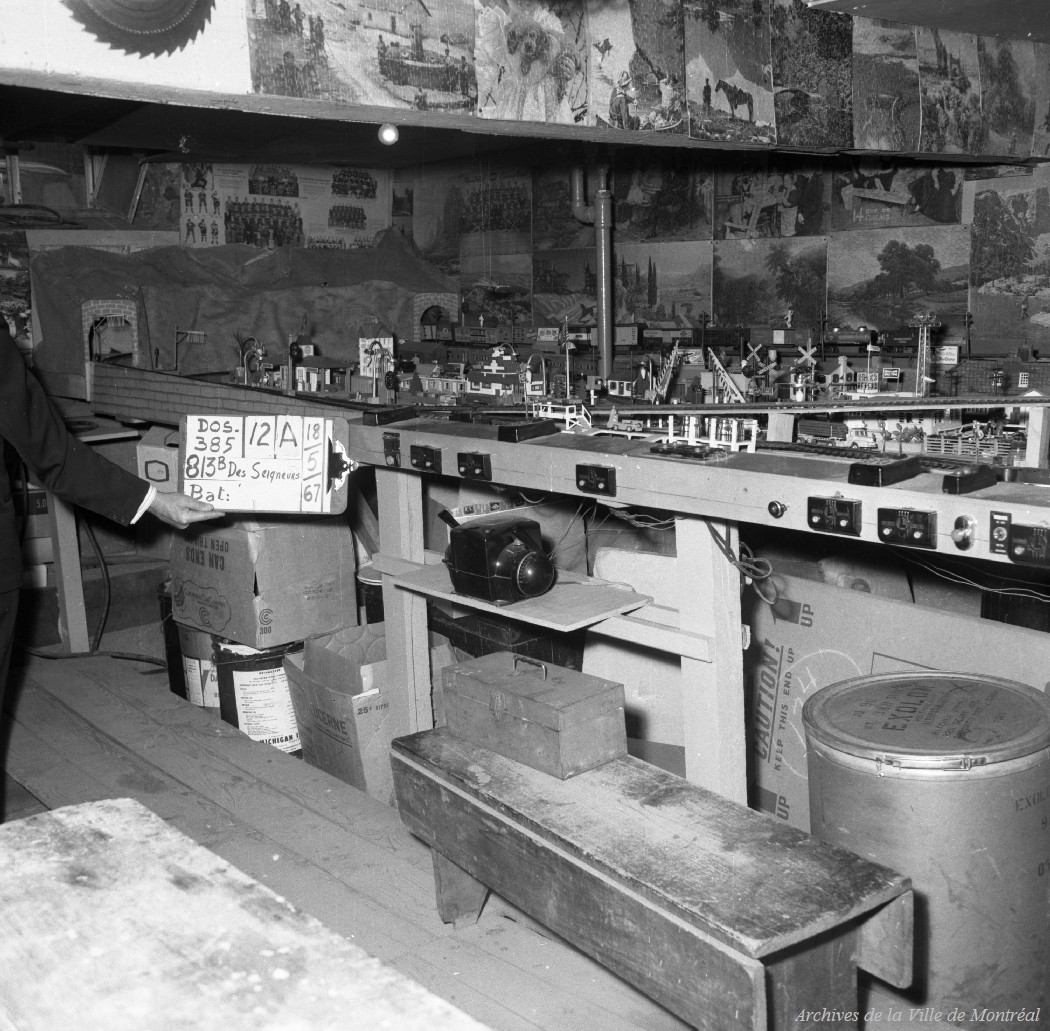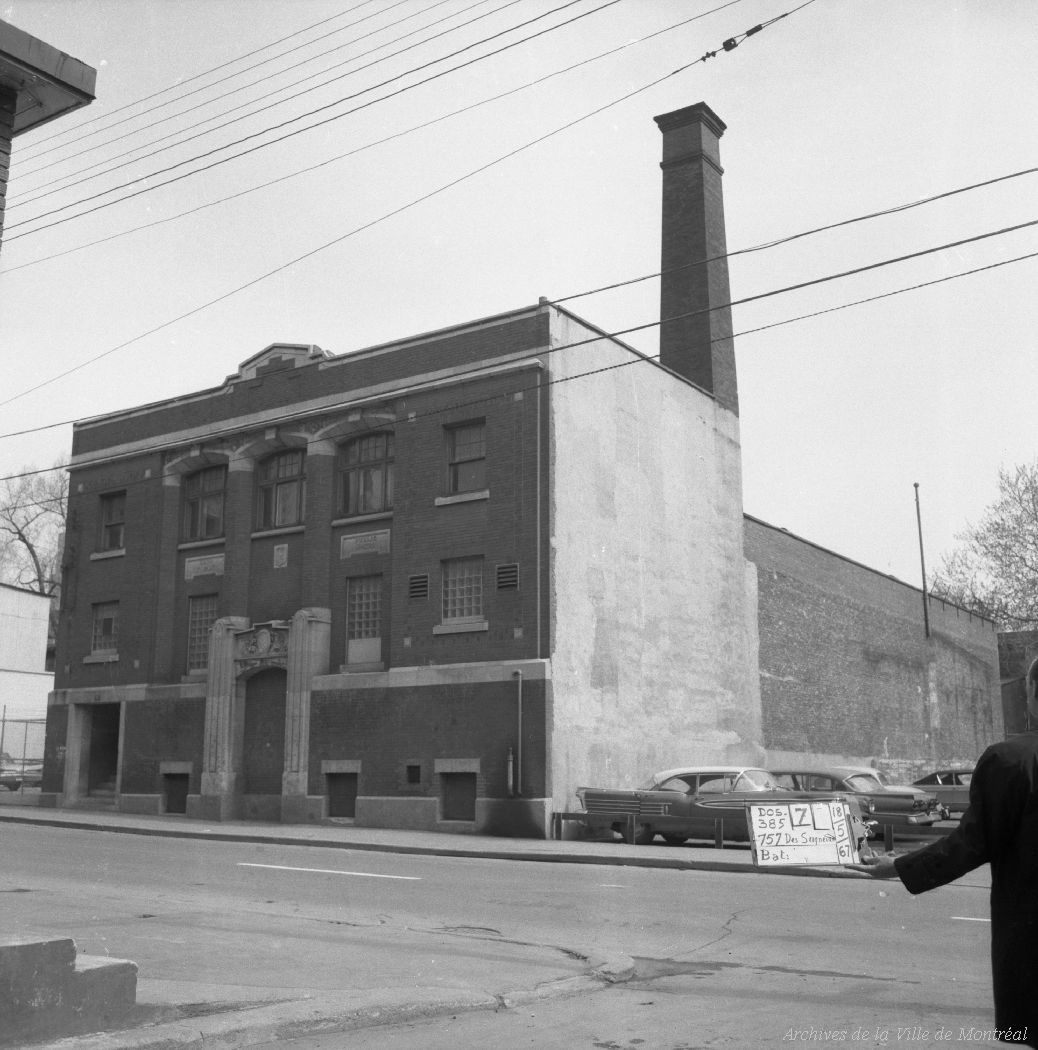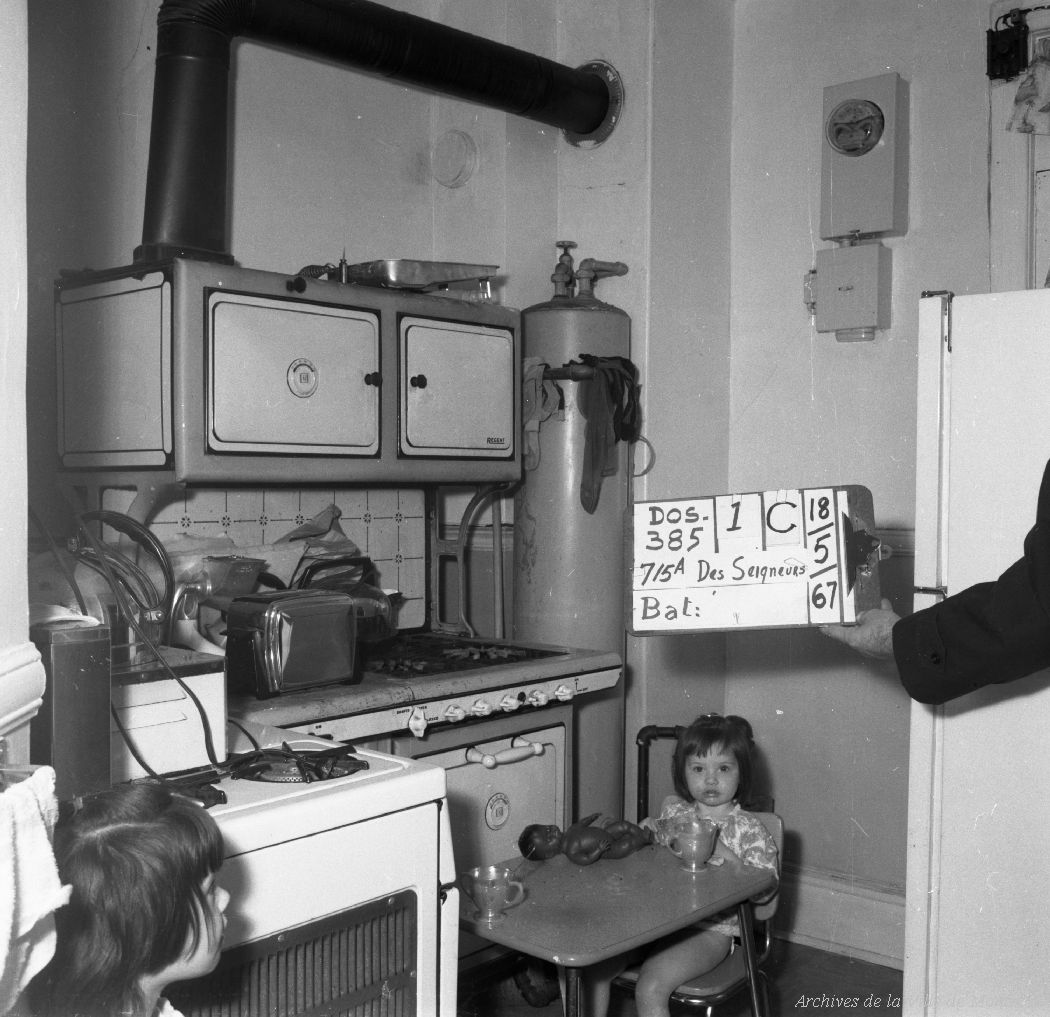In 1960s Montreal there was a pressing need to improve housing. Many older areas of the city were deteriorating into slums. Housing was often poorly maintained and under-equipped. The economic crisis of the 1930s and Second World War had put an end to investment and renovation. The governing administration wanted to demolish failing housing and redevelop areas with new projects. So they man from the ministry knocked the doors of homes earmarked for demolition or improvement. He held aloft the code for each home. And a photographer recorded the scene. In many pictures we never see the face of the man holding the sign as he stood close to the residents, who continued with their daily lives. There’s an element of mystery in these pictures. Who is the figure seen from behind, or just in a disconnected limb?
Demolition meant eviction. And not everyone wanted to leave their home.
Several committees of residents were created to make residents’ voices heard. They sought a more communal vision. In Petite-Bourgogne, the announcement of mass evictions prompted residents to form the Saint-Martin islands committee in order to put pressure on the city and to build affordable social housing that respected the public’s expectations.
Launched in 1965, the Petite-Bourgogne renovation project reflected this change of approach for the first time. This time, the plan was to limit the demolition of dwellings that have become too far gone for preservation, while at the same time renovating some existing buildings. The development of parks and the construction of social housing was planned. Grants were created by the municipal authorities to support the owners in the renovation of older dwellings. The aim was to improve living conditions in the neighborhood by meeting “the needs of the current inhabitants”.
The district of Petite-Bourgogne already has an extremely rich history. Constituted under the name of Delisle village in 1864, this area became the town of Sainte-Cunégonde in 1875. The municipality was then delimited by Atwater street to the west, the Lachine canal to the south and a diagonal closing the triangle from the Lachine Canal and Provost Street to the corner of Atwater and Dorchester. Annexed to Montreal in 1905, the neighborhood was experiencing a rich cultural life, fueled notably by the presence of the black community since the beginning of the 20th century. The Colored Women’s Club was born there in 1902, followed in 1907 by the Union Congregational Church (now Union United Church), the University Negro Improvement Association in 1919 and the Negro Community Center in 1927. In the 1930s and 1940s , The district hosts many jazz musicians. Oscar Peterson was born on August 15, 1925.
But like the neighboring sectors such as Griffintown or Saint-Henri, Petite-Bourgogne was slowly being depleted in the course of factory closures. Both Victorian and typically working-class architecture suffered the throes of time and lack of maintenance. Almost half of the existing buildings were built between 1875 and 1890. The municipal administration came to regard the area as a slum in the 1950s and thus aimed at it with its urban renewal project. As it did for the Faubourg à m’lasse or Victoriatown sectors, the City made a considerable photographic inventory of the houses destined to disappear or to be renovated, numbering them scrupulously. On these images, the inhabitants of the area often appear, while each one continues his work or his daily activities.
And just out of reach is the Mysterious Man From The Ministry.
Via Archives de la Ville de Montréal
Would you like to support Flashbak?
Please consider making a donation to our site. We don't want to rely on ads to bring you the best of visual culture. You can also support us by signing up to our Mailing List. And you can also follow us on Facebook, Instagram and Twitter. For great art and culture delivered to your door, visit our shop.
